vivo X300 Pro Review: From Dimensity Tuning to 200-Megapixel Imaging, Seeing Blue Factory's Evolution
![]() 10/14 2025
10/14 2025
![]() 419
419
With the release of the vivo X200 Ultra in April this year, the 2025 smartphone imaging competition has entered a fierce phase. Every manufacturer is constantly pushing the boundaries of smartphone imaging by stacking hardware and updating algorithms, with vivo leaving the deepest impression on Leiguan Technology. The reasons are simple: BlueImage algorithms, humanistic street photography mode, telephoto stage mode, and other technologies not only enrich users' shooting composition ideas but also lead the industry's progress.
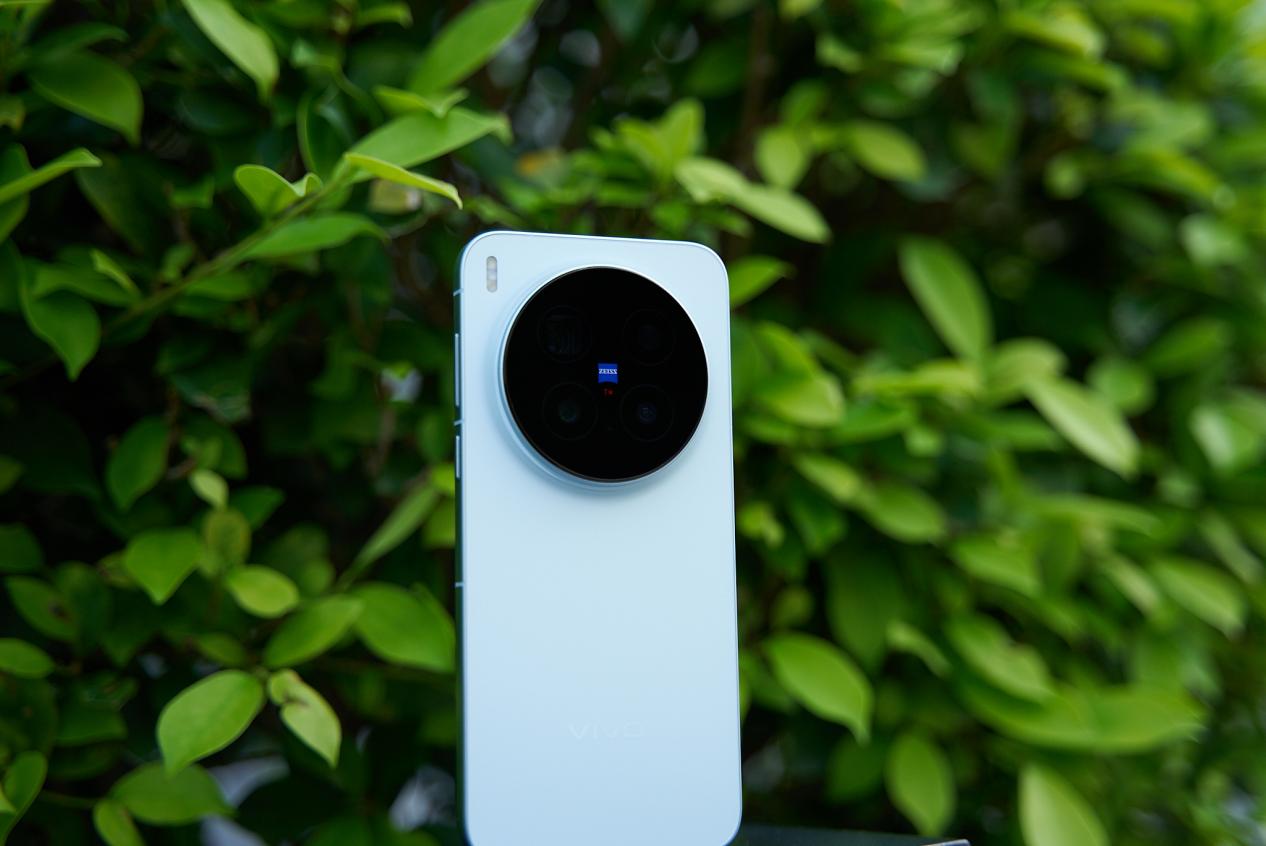
Today, we're experiencing the vivo X300 Pro, vivo's latest technological masterpiece. It not only brings new imaging improvements but also sets market benchmarks in other configurations. Without further ado, let's dive into the experience.
Starting with the primary camera, the vivo X300 Pro features the latest LYT-828 gimbal-grade primary sensor co-developed by vivo and Sony. With 50 megapixels, a 1/1.28-inch large sensor, and 1.22μm unit pixel size, it simply means clearer shots, more complete detail retention, and better performance in backlit and low-light scenes.
However, its truly standout features are three new technologies: Hybrid Frame-HDR, Loss Less Exposure (LLE) technology, and low-power design.
Let's begin with Hybrid Frame-HDR. Traditional smartphone sensors, limited by size, struggle to match the dynamic range of professional cameras. This results in overexposed or underexposed images in high-contrast scenes due to insufficient sensor dynamic range. The LYT-828 sensor's Hybrid Frame-HDR technology perfectly combines "single-frame dual gain" and "multi-frame synthesis," extending the sensor's dynamic range to over 100dB.
This theoretical explanation might still leave some readers puzzled, so let's use several sample shots to illustrate the vivo X300 Pro's primary camera performance.
First, a sunset scene shot by the seaside. The image clearly shows the vivo X300 Pro's excellent control over light sources, preserving details like the sunset glow on the sea, indoor lights of nearby buildings, colored lights below, and even reflections on the water. The entire scene looks clean and textured.
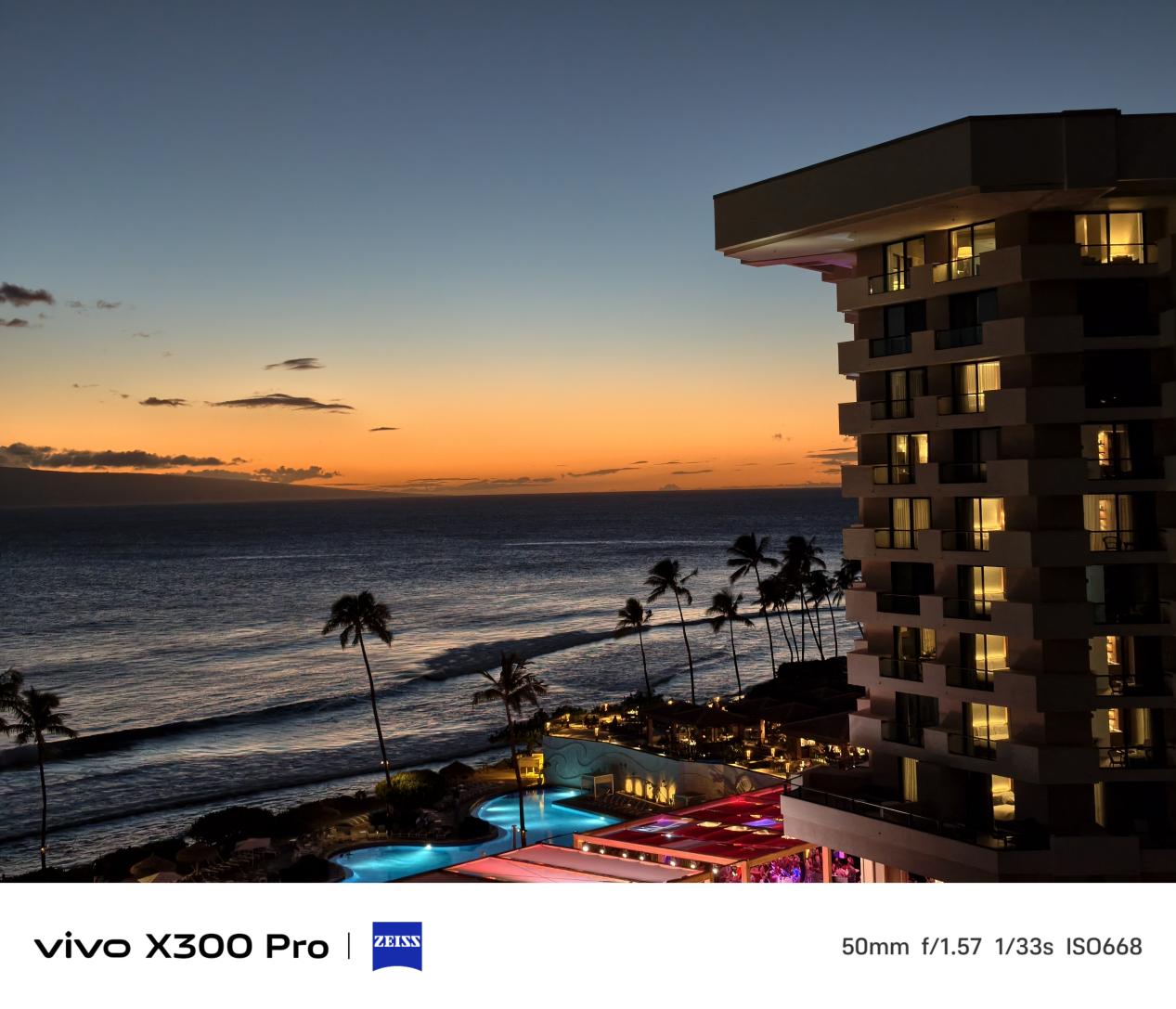
In this completely backlit sample, the vivo X300 Pro's performance far exceeded Leiguan Technology's expectations. Typically, when the camera faces a strong light source, the vast difference between background brightness and subject darkness causes the camera's auto-exposure to prioritize bright areas, resulting in a pitch-black subject with little to no detail.
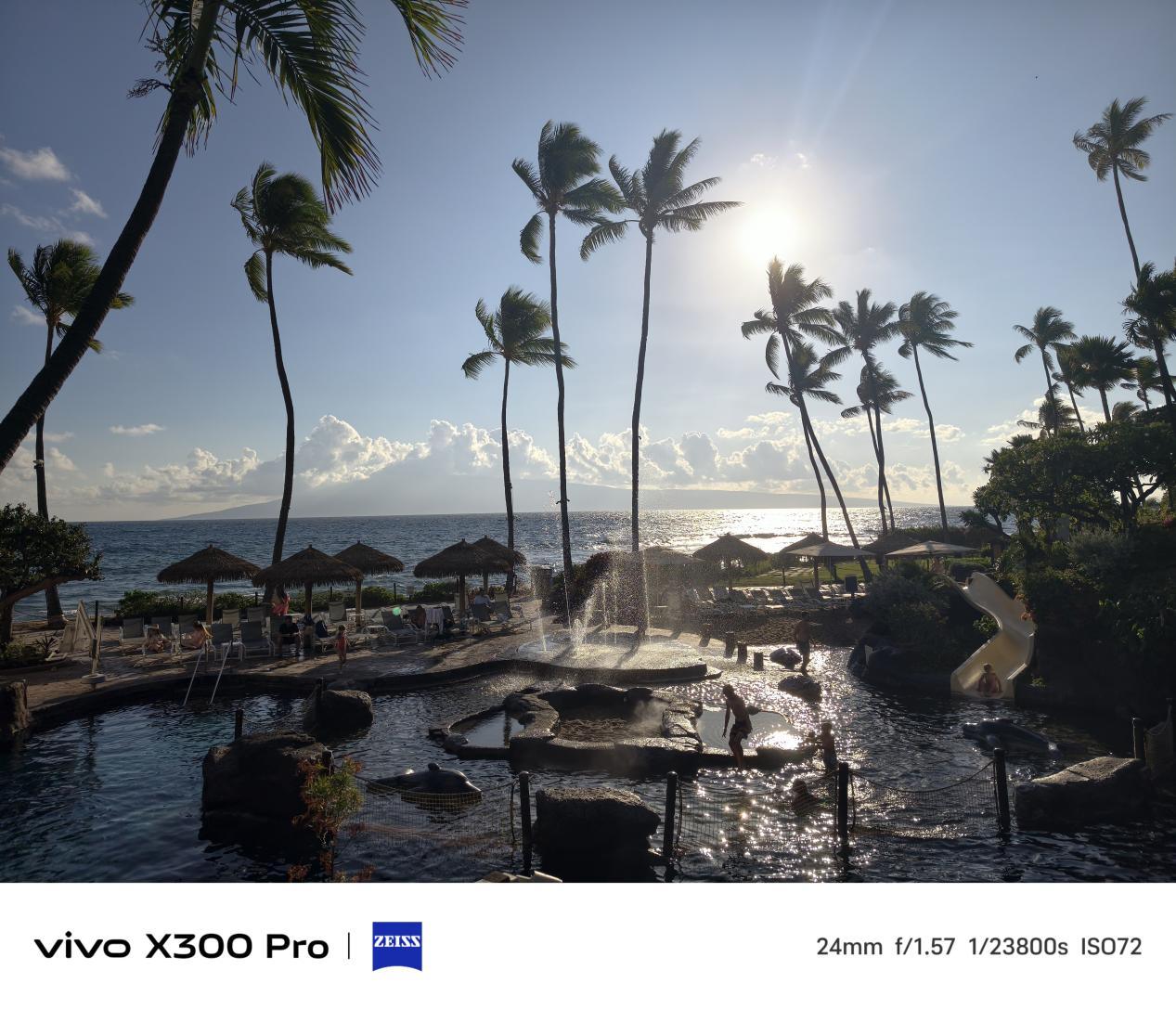
However, the vivo X300 Pro retains most of the subject's dark details without reducing background brightness, while also preserving high-brightness light sources caused by reflections.
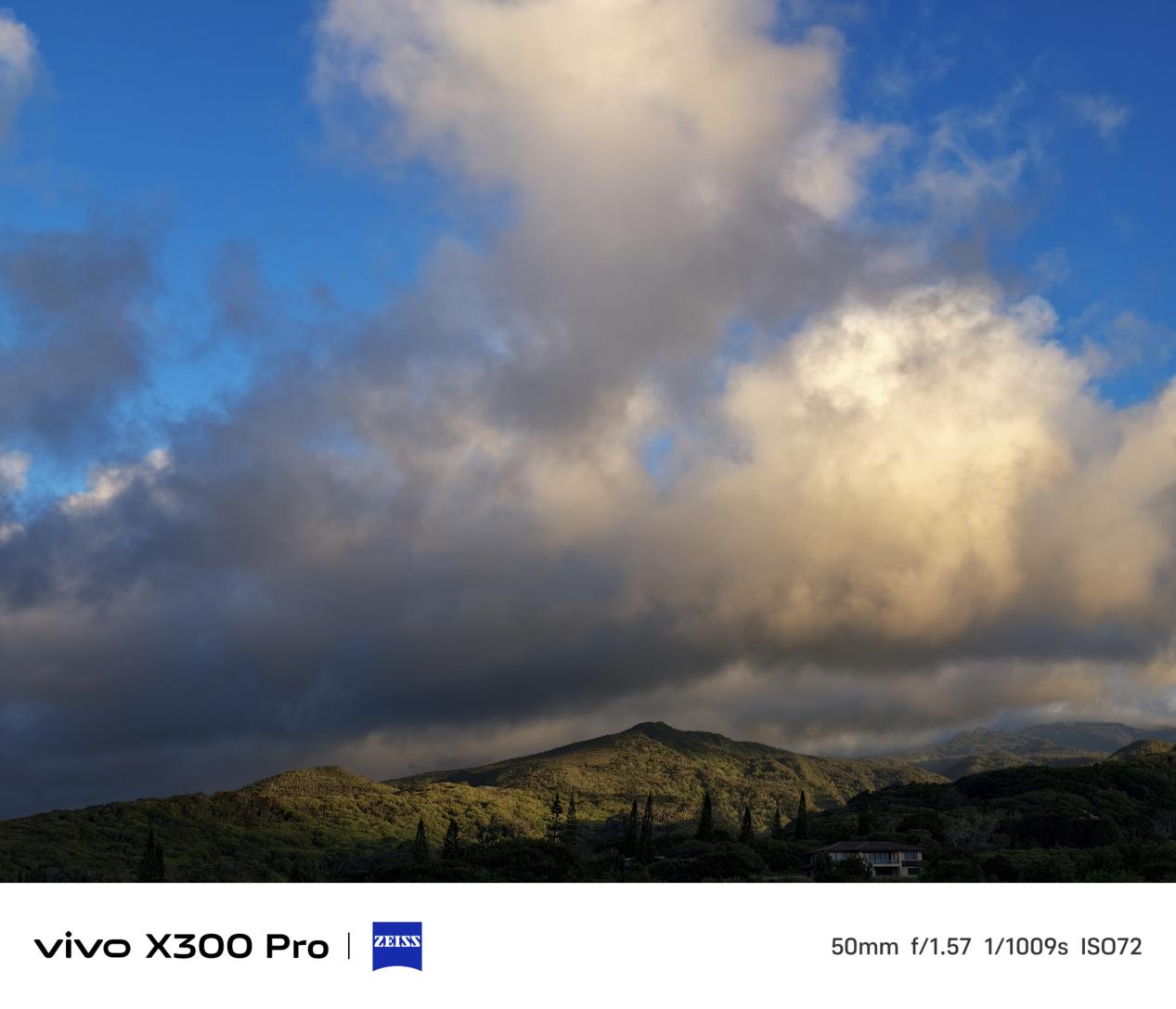
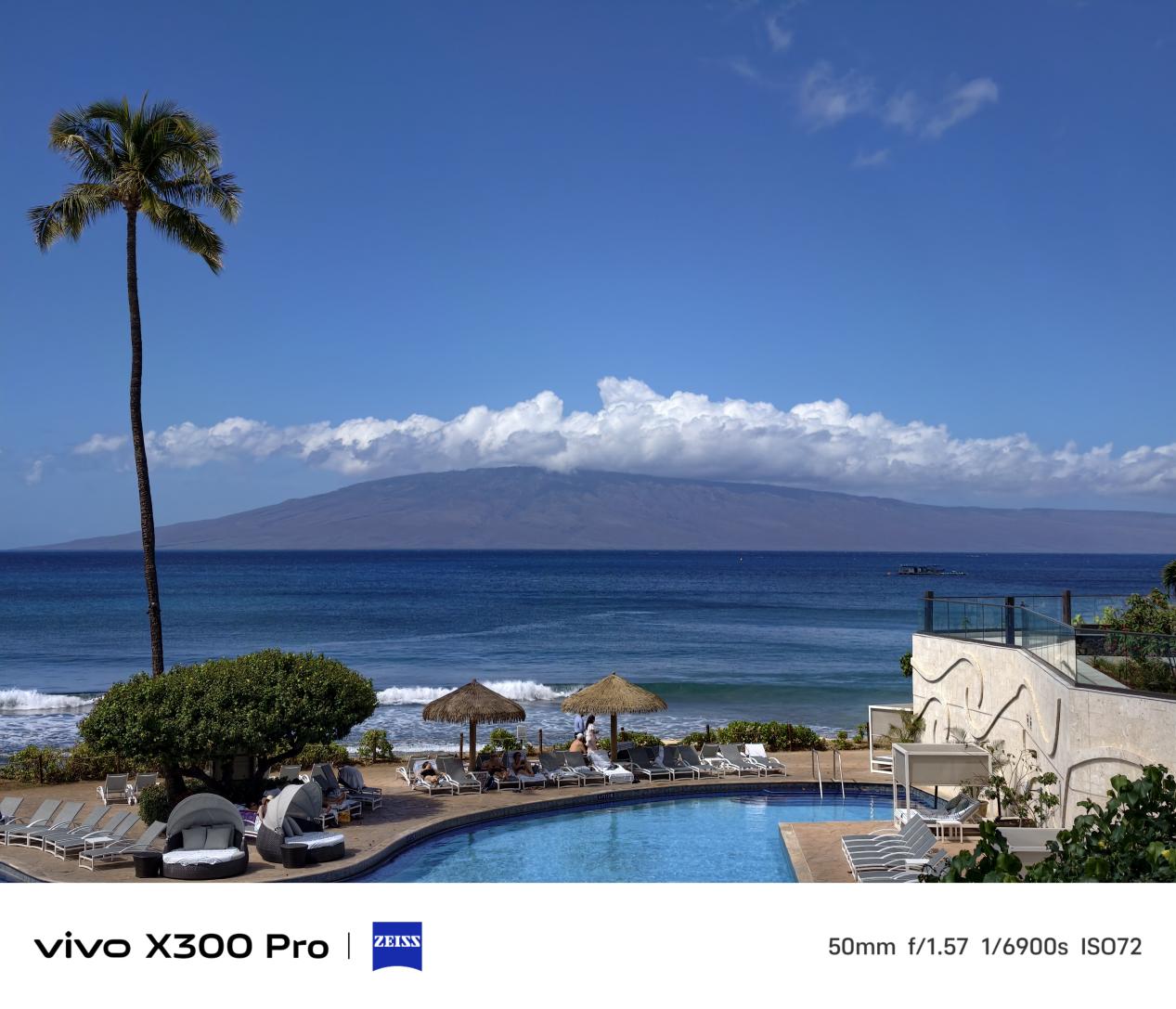
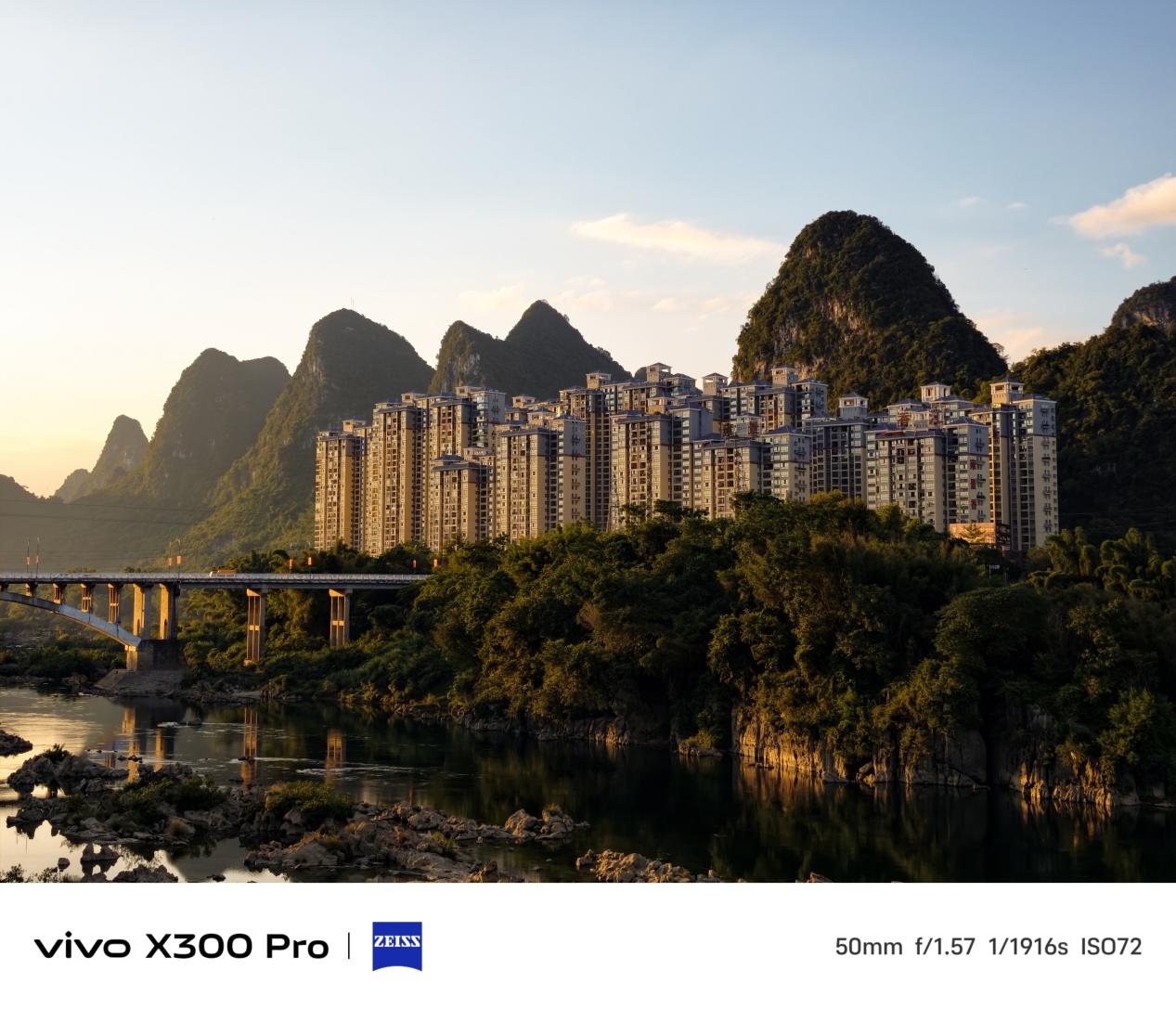
This is also evident in another set of samples. The vivo X300 Pro handles light sources in the frame exceptionally well, without making it obvious that algorithms were used. The entire photo looks natural and textured. If not for the camera watermark, it could easily "fool" readers into thinking it was taken with a mirrorless camera.
The second advantage is Loss Less Exposure (LLE) technology, which effectively reduces image noise by improving the signal-to-noise ratio (SNR). In simpler terms, it means better night scene performance, with superior purity, fewer noise artifacts, and smoother transitions between bright and dark areas.
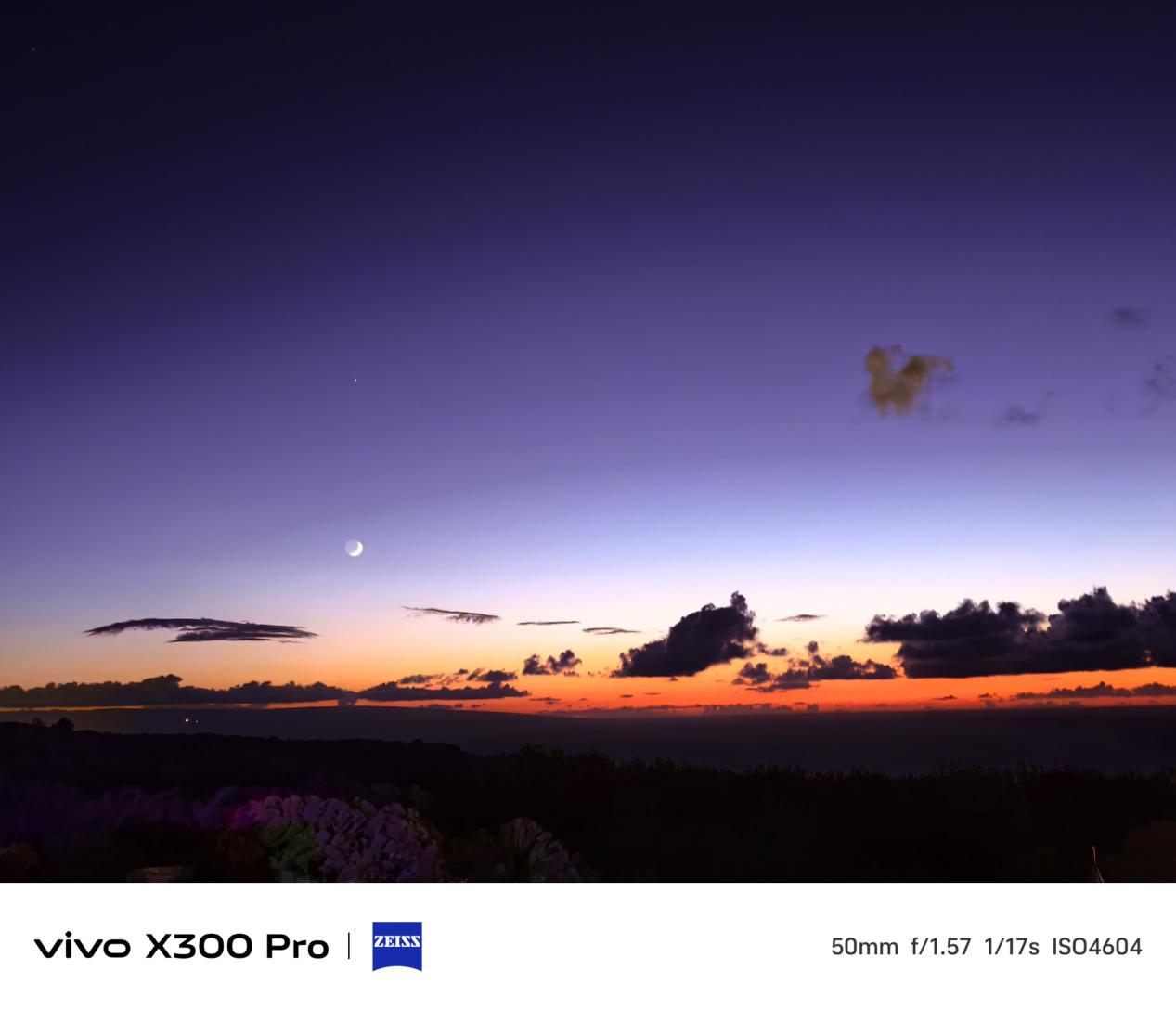
For example, in this nighttime sample taken on a hilltop with no light sources other than the fading sunlight and moonlight—meaning it was nearly pitch black—the vivo X300 Pro captured the remaining light in the scene. While preserving the transition between bright and dark areas, it increased overall brightness, resulting in an outstanding sunset shot.
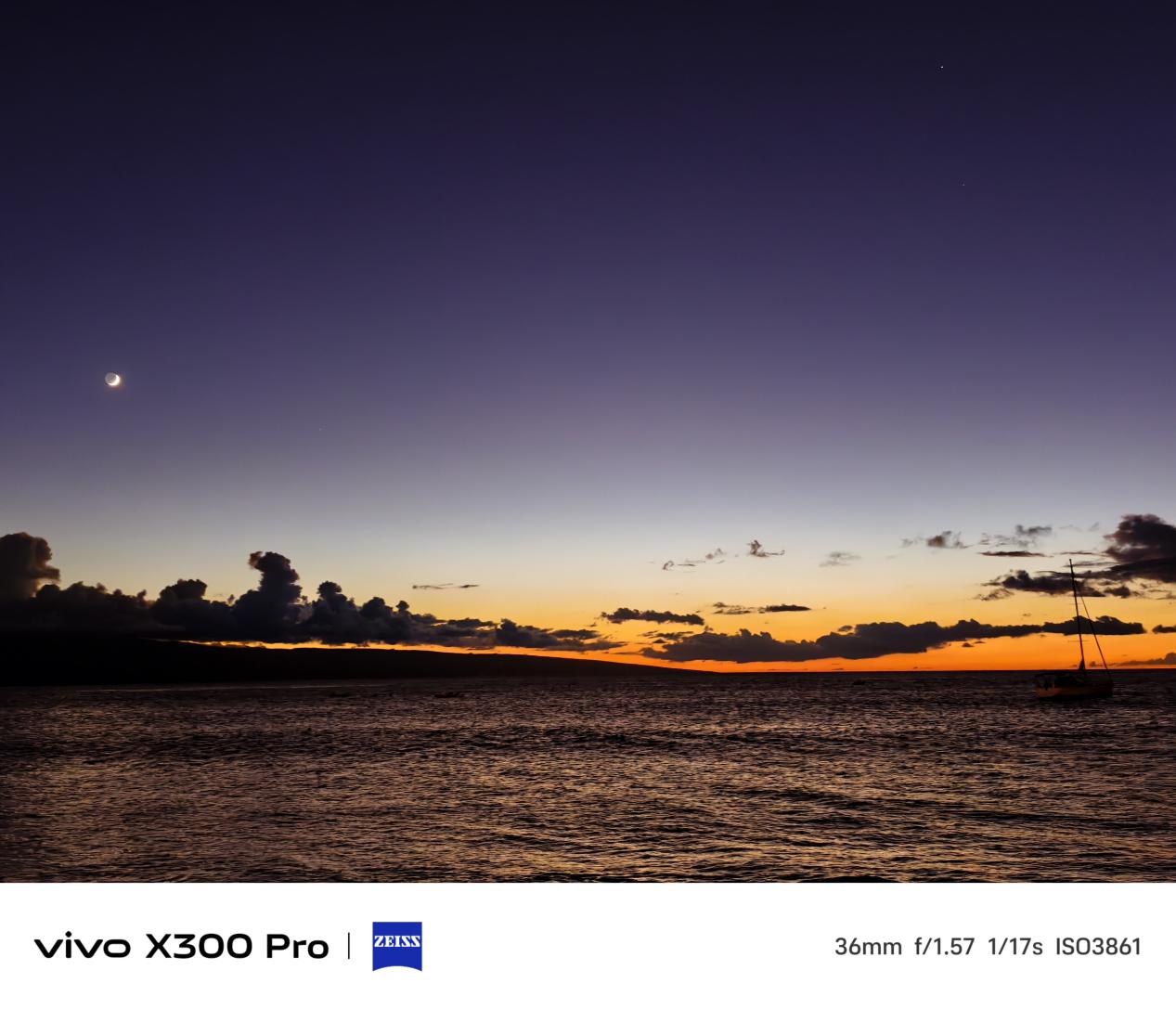
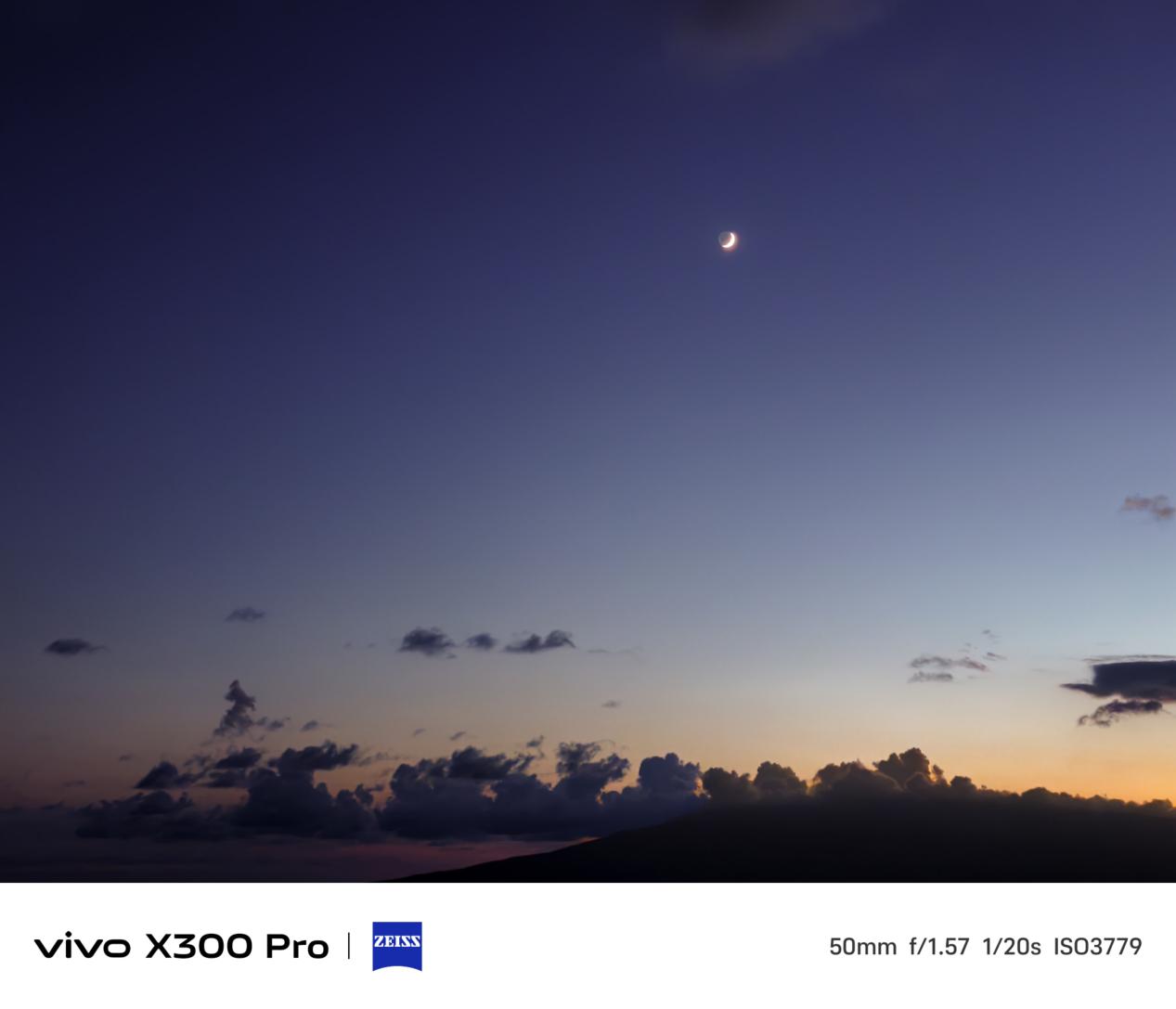
The final selling point is consistently low power consumption. While some readers might associate sensor power consumption solely with battery drain, lower power consumption actually means manufacturers can allocate more "resources" to computational optimization, enabling HDR functionality to remain active during image preview and video recording.
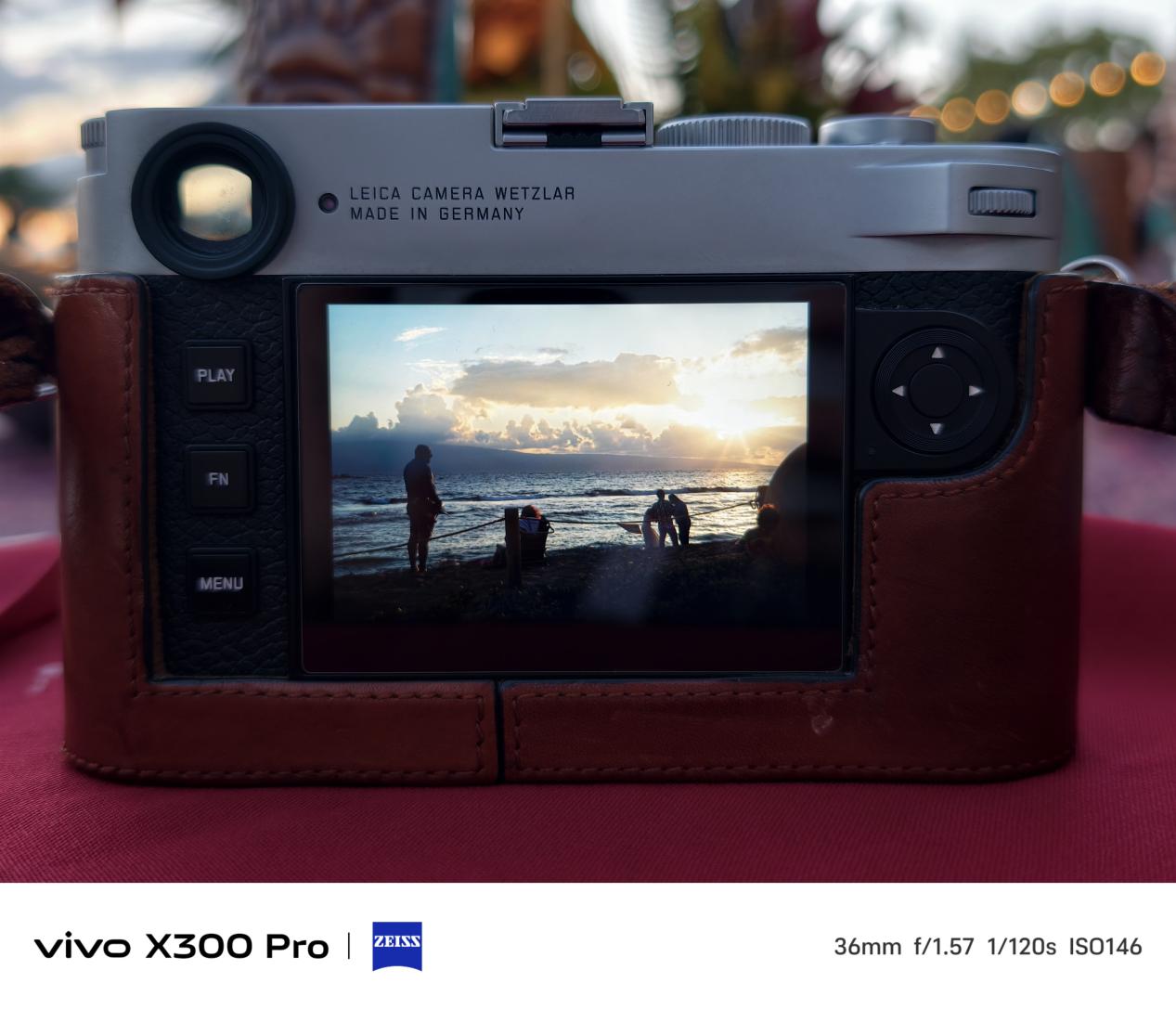
After discussing the primary camera, let's talk about the vivo X300 Pro's telephoto lens. As a lens used nearly as frequently as the primary camera, users increasingly value smartphone telephoto performance. Telephoto lenses have evolved from 8 megapixels in earlier years to 50 megapixels, with vivo once again leading the industry by introducing a 200-megapixel telephoto lens on the X100 Ultra/X200 Ultra, which remains one of the best telephoto smartphones on the market.
The vivo X300 Pro features the HPBlue sensor, co-customized by vivo, Samsung, and MTK in terms of hardware and software integration. While its theoretical performance is widely recognized, let's analyze it through sample shots.
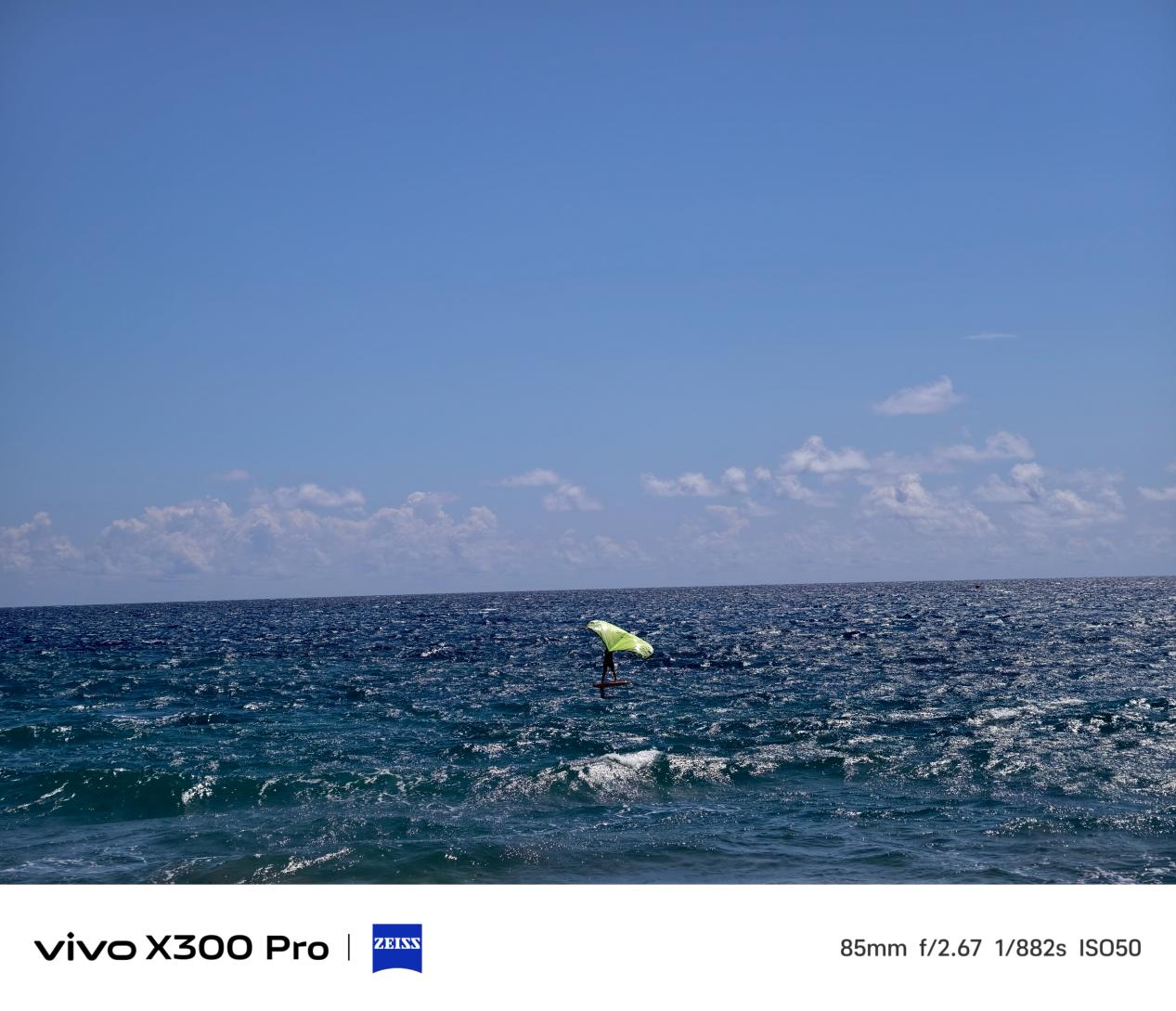
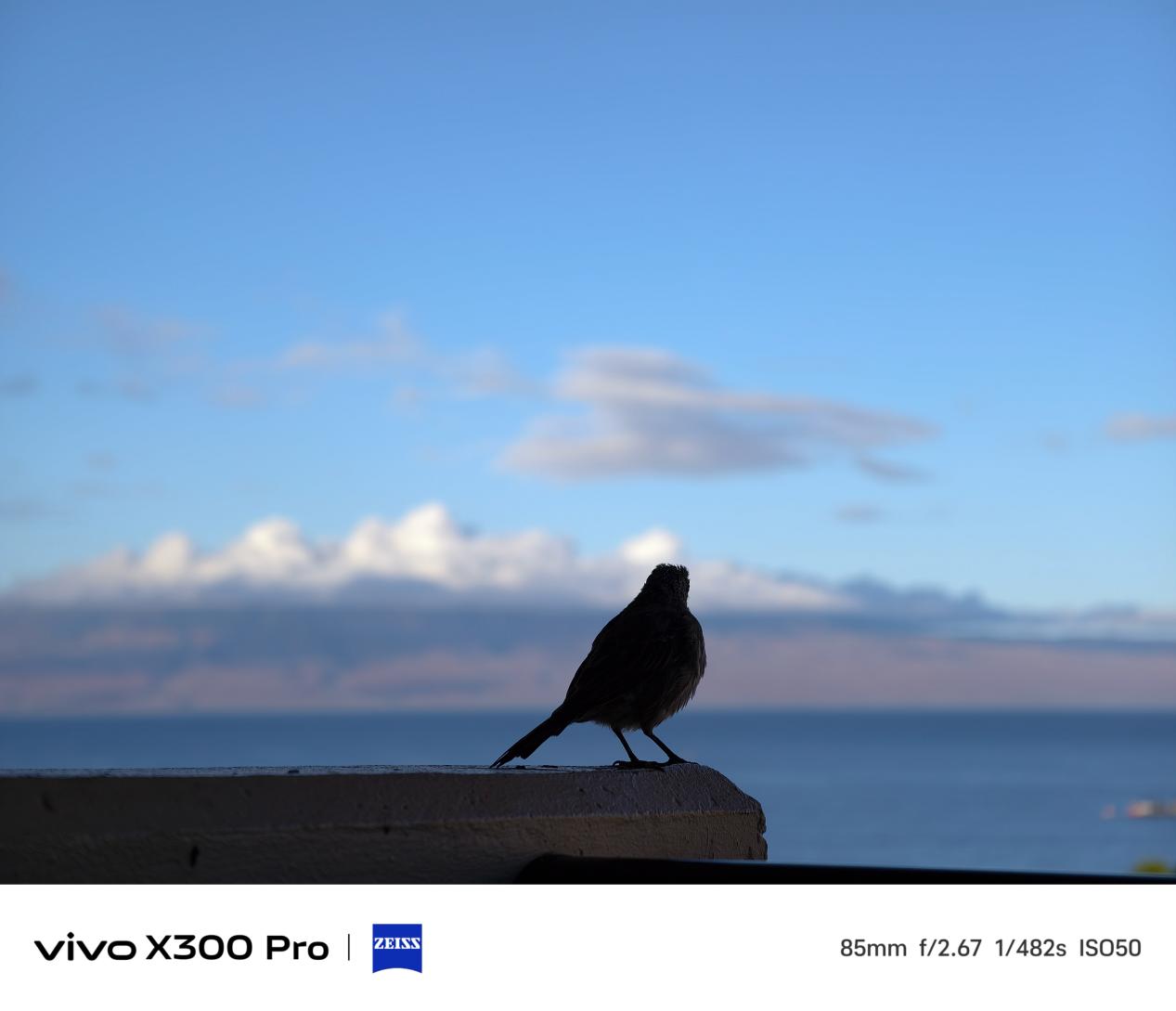
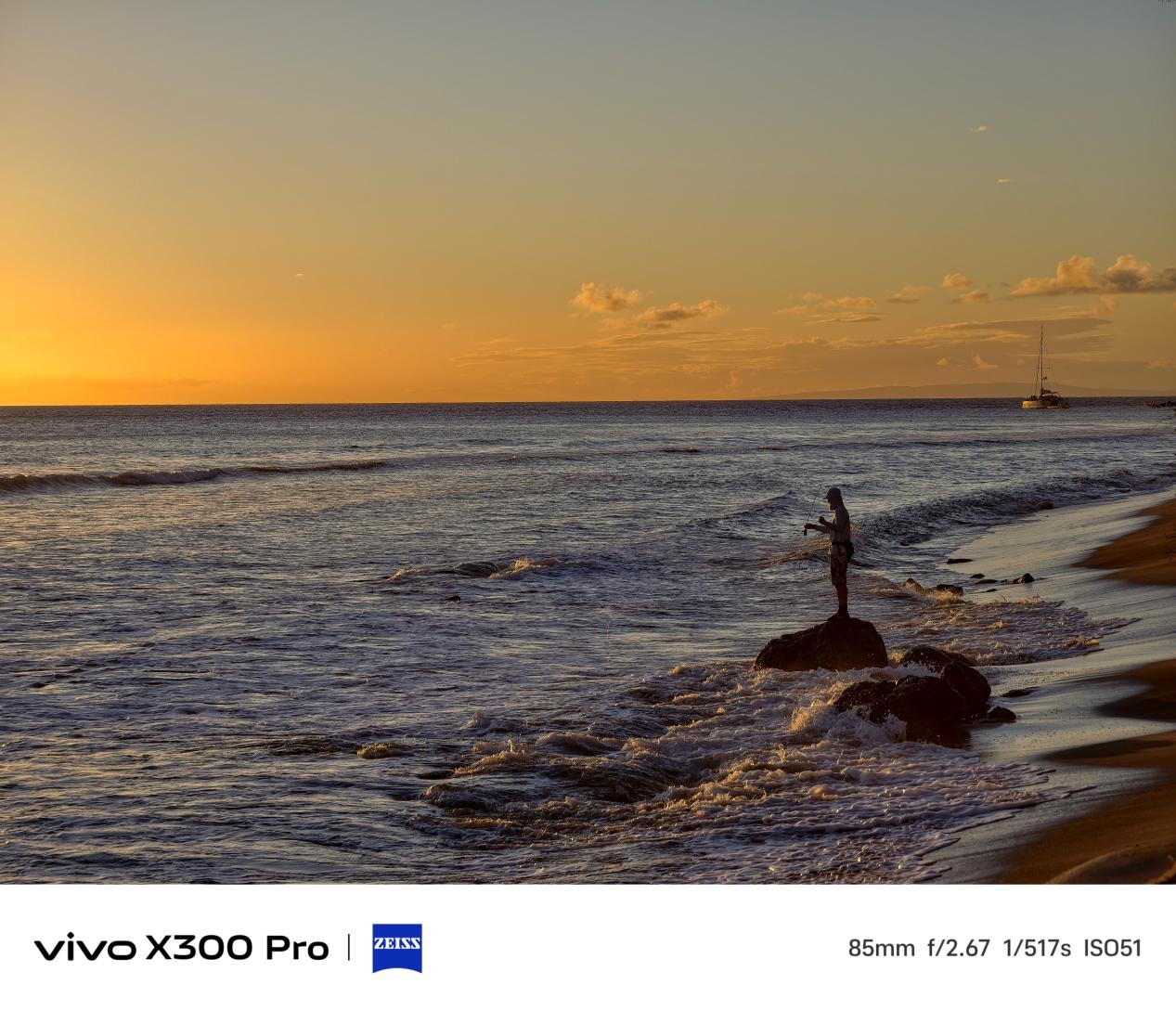
With its 200-megapixel ultra-high resolution, the vivo X300 Pro delivers outstanding image quality across various subjects, with white balance nearly matching the primary camera at "zero tolerance" levels.
Even when zooming from the native 85mm focal length to 170mm, the image shows no signs of smudging, with distant mountain details preserved effectively.
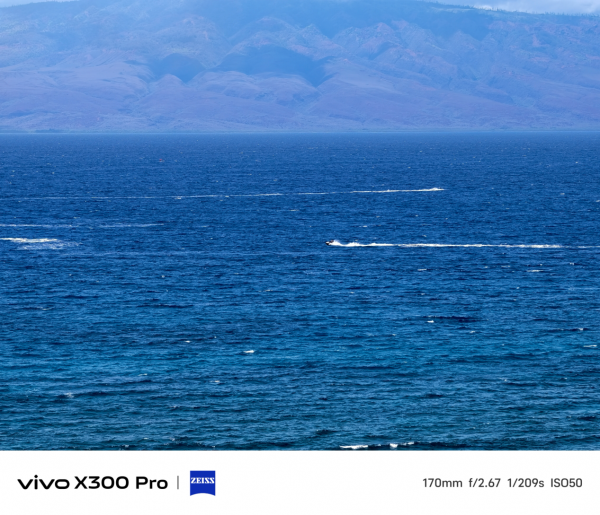
Now, let's push further to exaggerated focal lengths like 250mm, 500mm, or even 750mm. This requires excellent hardware-software coordination, testing the manufacturer's sensor tuning capabilities.
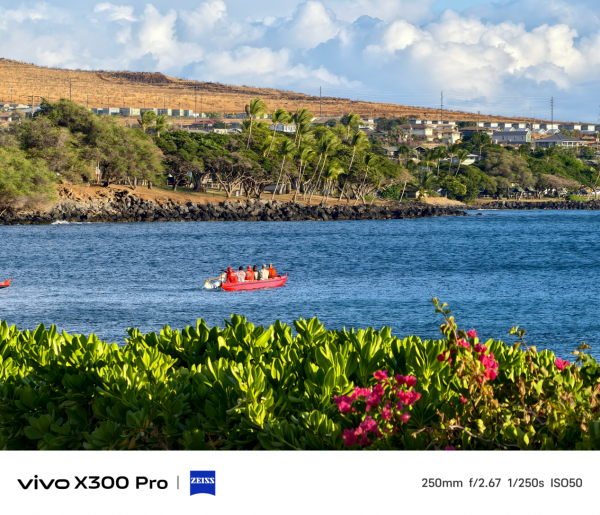
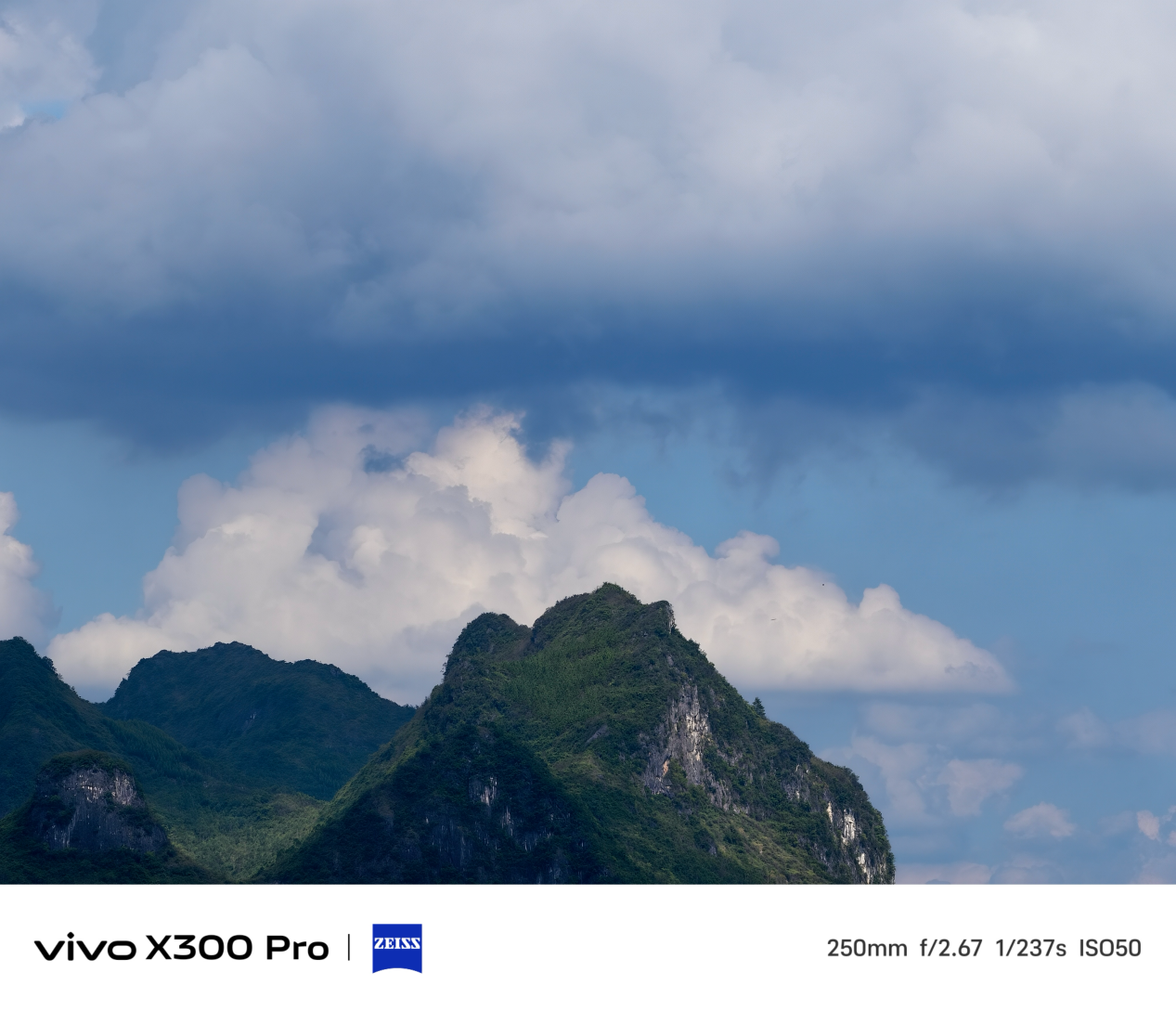
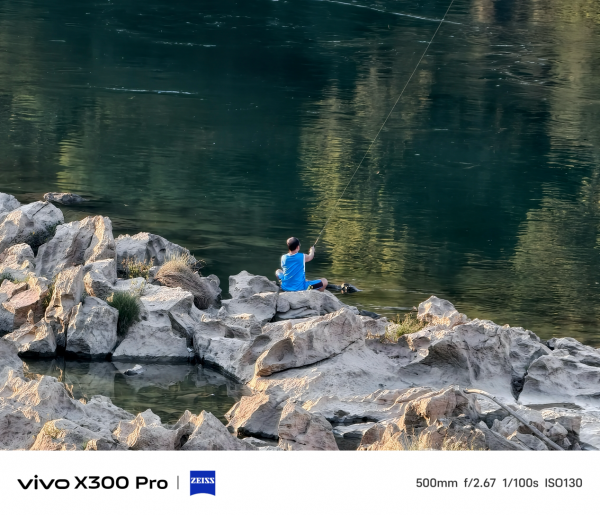
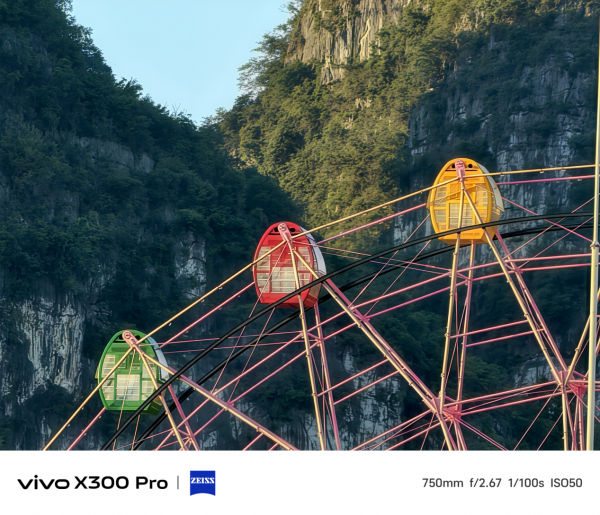
From the samples, when the focal length exceeds 500mm, some AI intervention becomes noticeable, but it doesn't result in severe smudging or detail loss as feared by Leiguan Technology. For a smartphone weighing just 226g, this telephoto performance can only be described as "terrifying."
Oh, and the vivo X300 Pro also features the same Zeiss 2.35x extender as the X200 Ultra. The reason for choosing 2.35x is that when paired with the X300 Pro's native 85mm telephoto, it effectively becomes a 200mm equivalent lens.
With this "physical cheat code," we captured stunning photos of the Mid-Autumn Festival moon comparable to those taken with professional cameras and super-telephoto lenses.
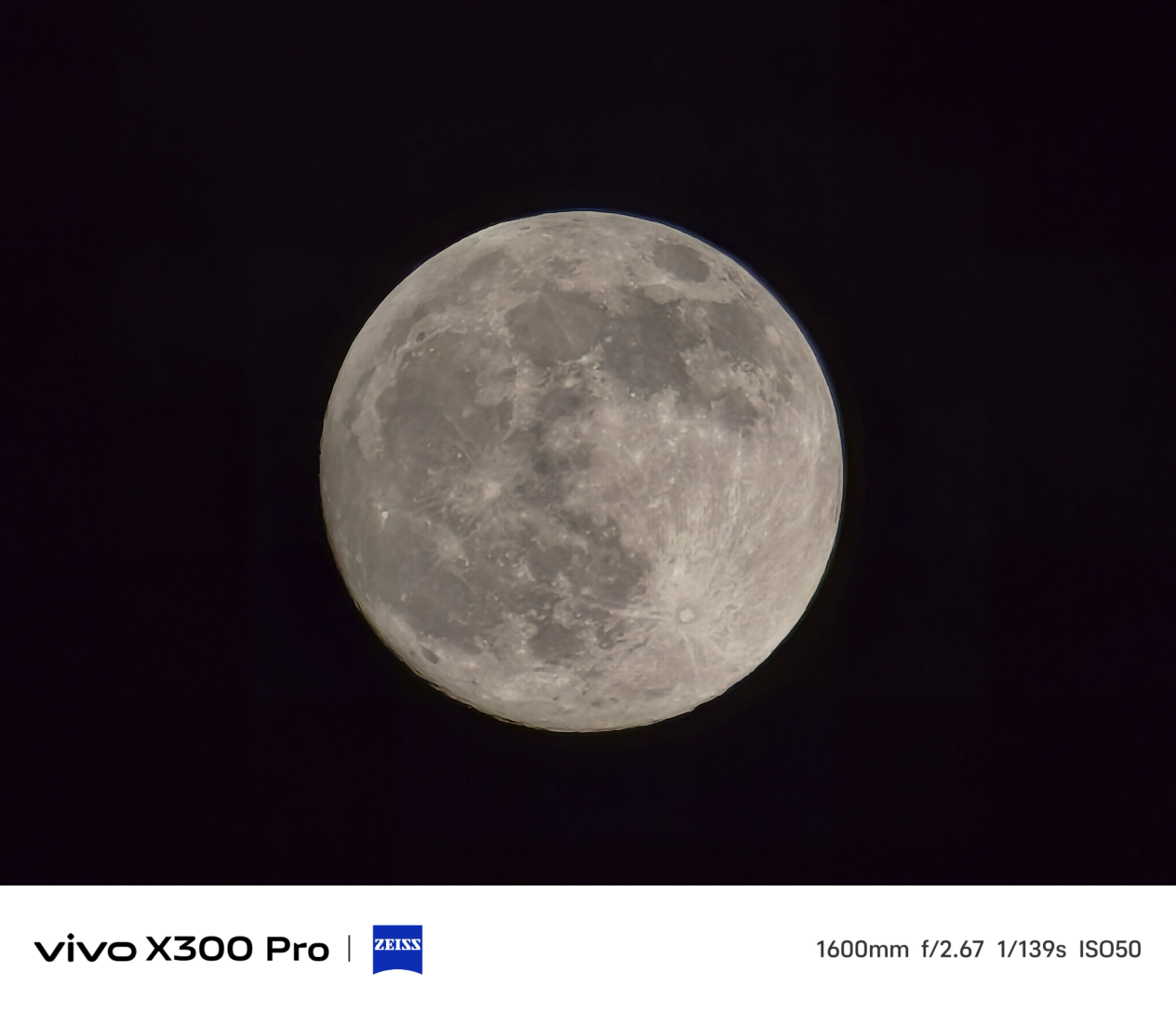
After viewing these samples, you should have a good understanding of the vivo X300 Pro's imaging capabilities. With its new primary camera, advanced algorithms, and a super-telephoto lens shared with top flagships, the vivo X300 Pro's imaging performance can undoubtedly compete with many imaging flagships. Moreover, even the standard vivo X300 model uses the industry's strongest Zeiss 200-megapixel super primary camera, suggesting that vivo will once again establish a reputation for "200-megapixel imaging excellence" among users.
At this point, many readers might think the key to taking a good photo lies behind the lens—and that's not entirely wrong. However, not all users have the time to learn optical fundamentals, complex compositions, or tedious post-processing. Therefore, in Leiguan Technology's view, the greatest advantage of smartphone photography isn't just portability—it's convenience.
Smartphone photography is no longer limited to competing on image quality alone. Enabling ordinary users to take great photos has become the next battleground. Manufacturers are continuously bringing professional techniques to mainstream products, making high- threshold (gatekeeping) professional experiences accessible to more people. As mainstream products "evolve" with these professional features, they, in turn, inspire professional applications, creating a virtuous cycle of bidirectional influence.
For example, previously, to shoot a starry sky time-lapse, I needed to scout a location, set up a tripod, stabilize the camera, and adjust settings like ISO, shutter speed, and burst count based on ambient light. With the vivo X300 Pro, no prior adjustments are needed—just hold the phone steady for about 8 seconds to capture a complete starry sky photo.
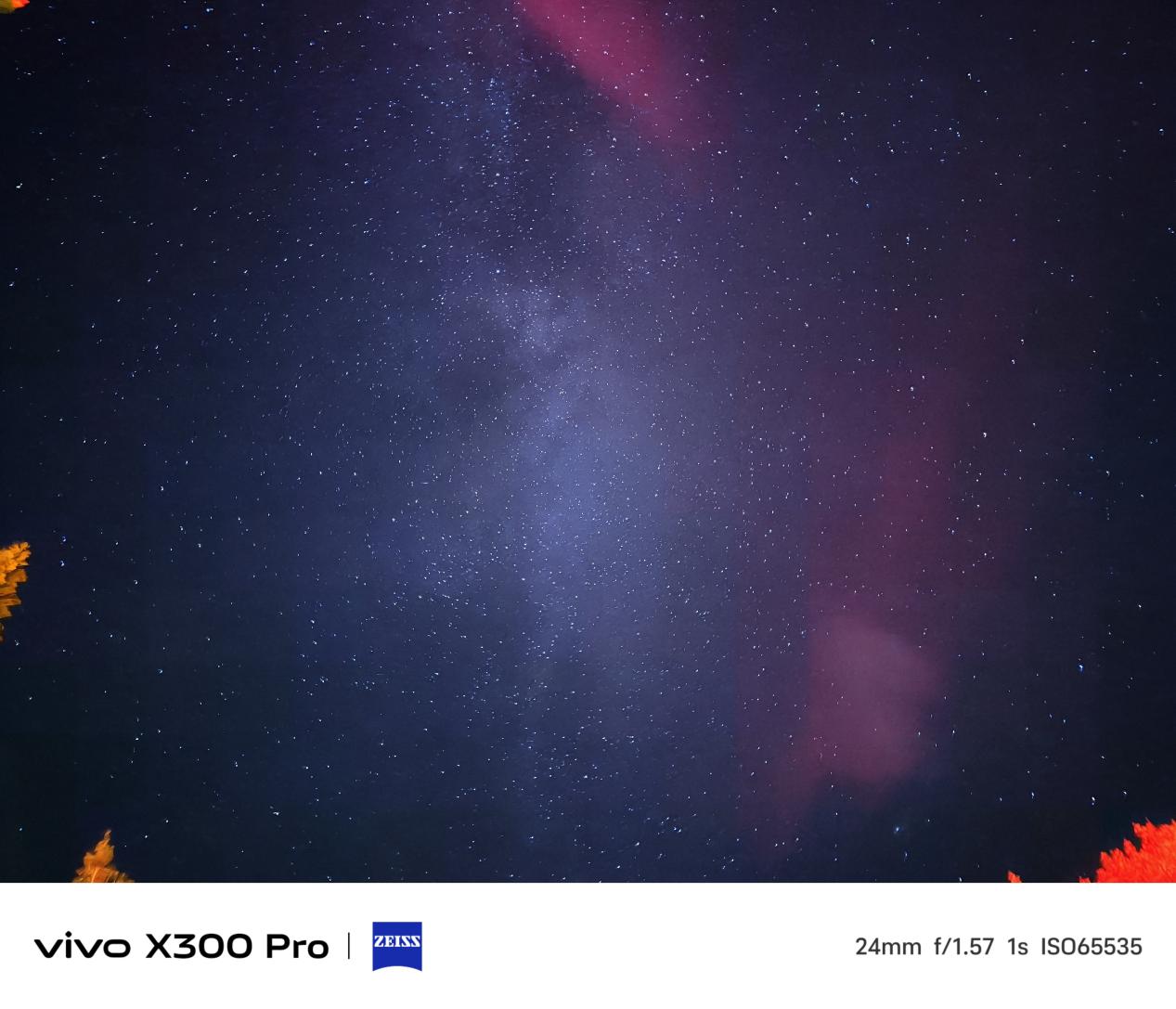
Of course, if you want to shoot long-exposure samples like star trails or light streams, simply select the corresponding mode in the options, greatly reducing the learning curve.
Compared to landscape photography, portrait photography is a field most photographers prefer to avoid. Besides paying attention to environmental factors like lighting, ISO, and color temperature, the time and effort spent on post-processing skin tones and facial features far exceed that of landscapes.
Yes, the vivo X300 Pro can also automatically optimize based on different scenes, lighting conditions, and the model's skin tone.
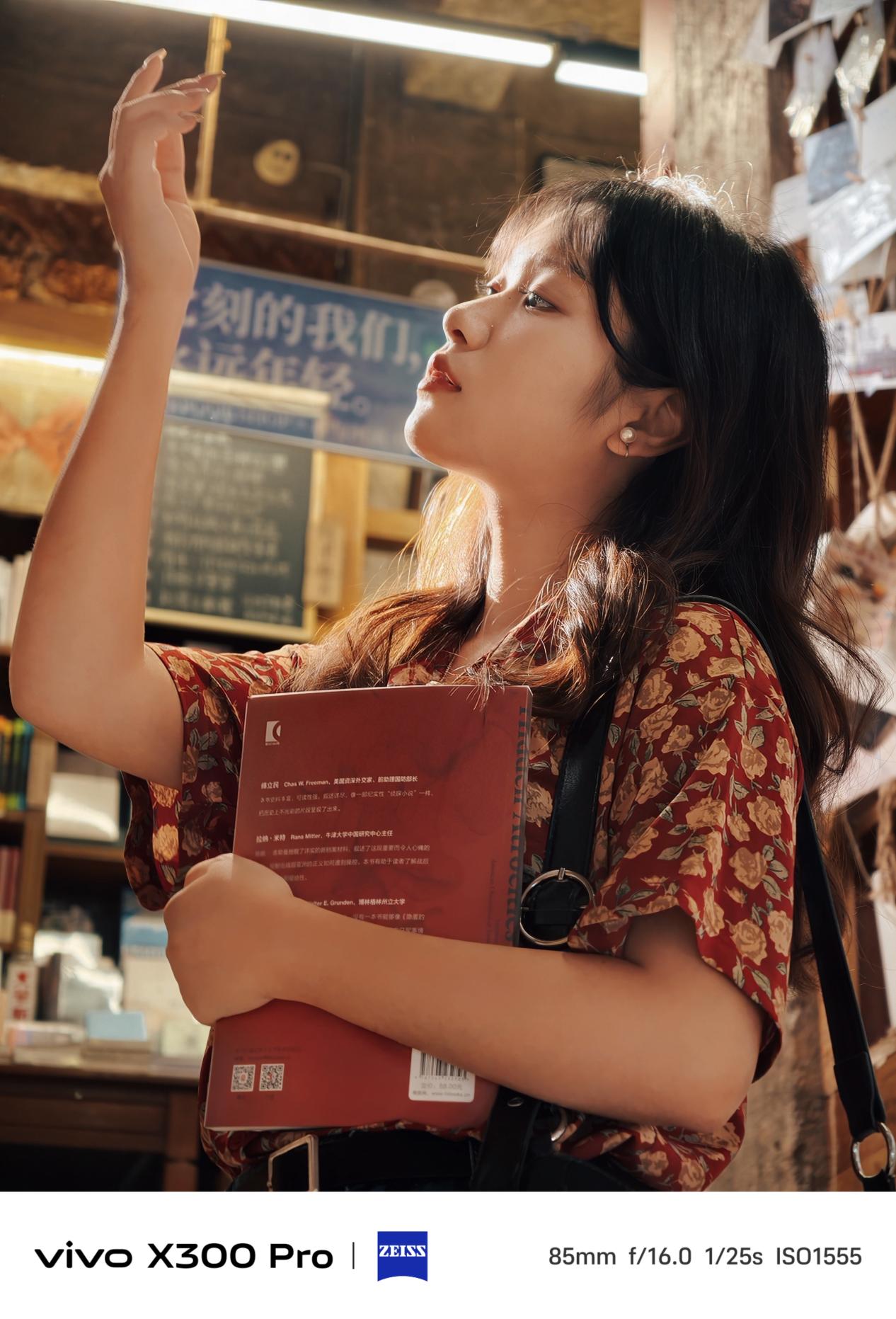
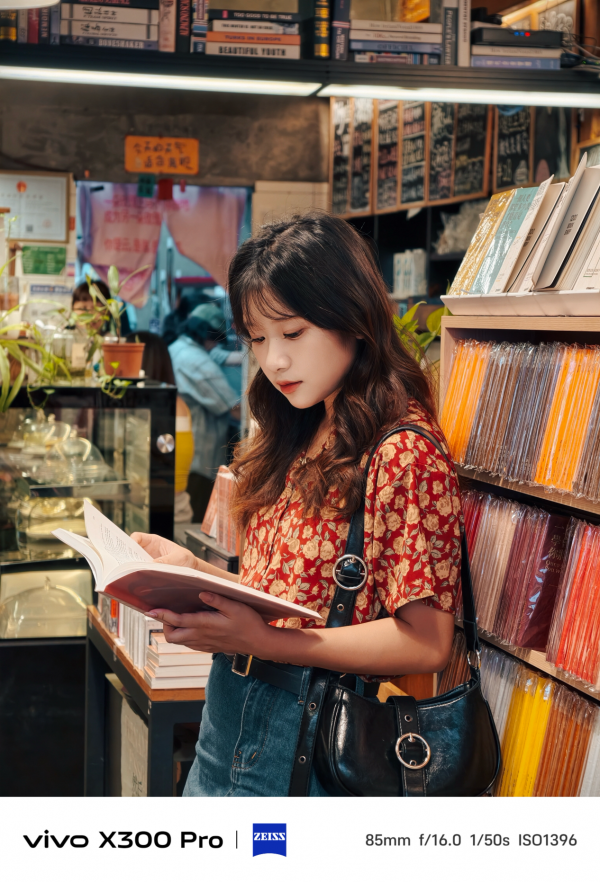
After enabling the dedicated portrait mode, the vivo X300 Pro not only retains the natural transition between subject and background from its portrait algorithms but also intelligently captures effective light sources in the scene, slightly brightening the image for an especially natural look.
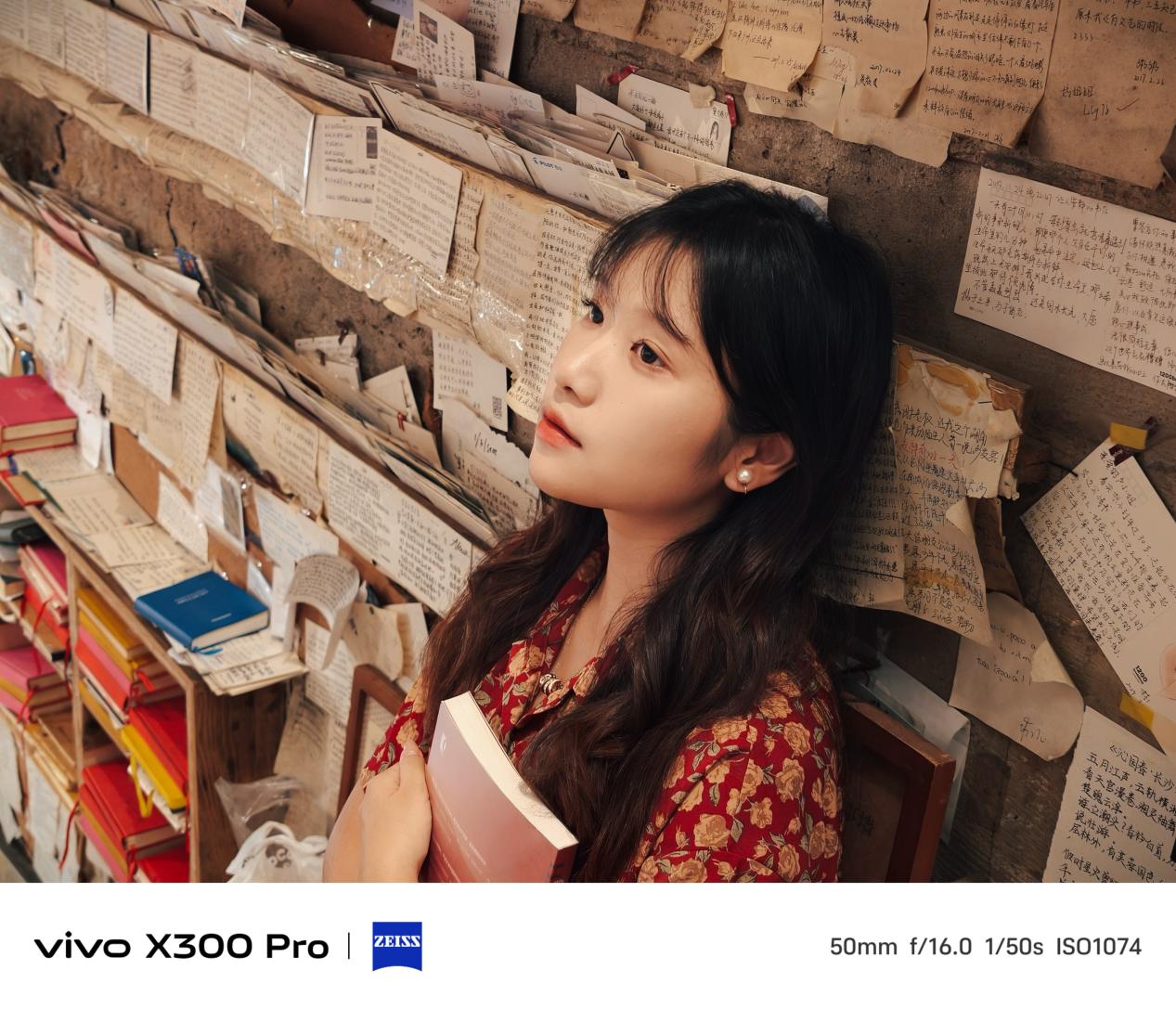
Of course, a closer look at these photos also reveals that they have undergone some skin smoothing and whitening treatments, but not excessively so. In the simplest terms, they look good and natural. This is precisely the effect of the vivo Zeiss Natural Portrait, which combines Zeiss lighting and Eastern aesthetics, replacing embellishment with restraint and brightening with three-dimensionality. There is no excessive beauty enhancement, preserving the real skin texture and three-dimensionality. Moreover, from 24mm to 135mm, every focal length can capture high-definition portraits, truly allowing for the creation of incredibly clear portrait photos with detailed hair.
Nowadays, retro styles have once again become one of the mainstream directions in portrait photography, with instant cameras, CCDs, and peel-apart films becoming popular shooting styles among many female users.
The vivo X300 Pro also comes with built-in retro filters such as CCD and peel-apart film styles. Paired with vivo's unique portrait algorithm, the results indeed have a slightly color-shifted, soft, and artistic feel.

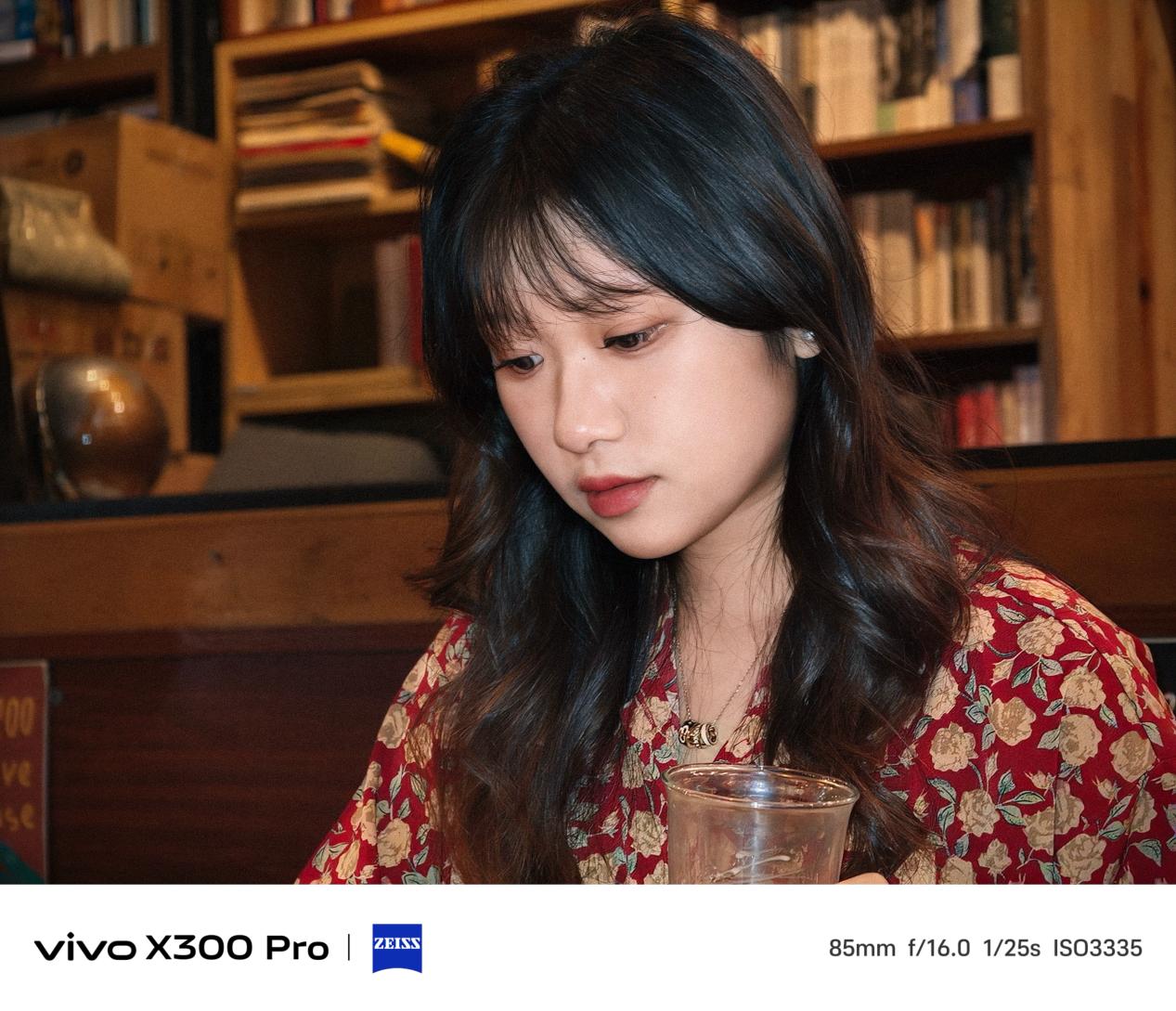
In such crowded public places, it's inevitable that we'll accidentally capture passersby in the background while shooting. This is not a problem for static photos, as all smartphone manufacturers have perfected the person removal feature.
However, removing people from Live Photos is much more challenging. After all, a Live Photo is essentially a short video clip, requiring the identification and removal of every frame in the video. This demands powerful data processing and real-time computing capabilities from the smartphone.

Powered by the Dimensity 9500 processor and vivo's self-developed Blue Image Chip V3+, the vivo X300 Pro not only exceeds expectations in terms of removal speed and accuracy but also makes it almost impossible to tell that there were once passersby in the background of the photo.
In fact, throughout this review, it's evident that algorithms play a very strong presence in the vivo X300 Pro, even more so than the hardware itself. Some readers might feel that the use of algorithms makes photos less authentic, considering it outright false advertising.
Lei Technology personally believes that smartphone photography at this stage cannot completely abandon algorithms; rather, it's algorithms that have brought smartphone photography to its current height. What we dislike are those overly aggressive and unnatural algorithms that strip photos of their authentic beauty. Clearly, the vivo X300 Pro excels in this regard.
In terms of video, the vivo X300 Pro has also seen significant upgrades, featuring 4K-level photo-while-recording capabilities through a "parallel recording and shooting architecture" + "photo multi-frame" solution, 4K dual-view recording that simultaneously uses the front and rear cameras, dual-focal-length 4K 120fps video, 10-bit Log professional-grade video, 4K full-focal-length portrait video, and various other functions. These break the long-standing impression that Android smartphones lag behind Apple in video recording.
It can be said that the performance of the vivo X300 Pro in imaging can only be described as "top-tier" by Lei Technology. Whether shooting people, landscapes, or objects, its top-tier image quality, rich mode selection, and simple, user-friendly operation give me great confidence. It truly deserves to be called a "travel photography artifact (magic device)" that can handle all shooting scenarios, something previous smartphones couldn't offer.
As a flagship product, if all its skills were focused solely on imaging, the vivo X300 Pro would at best be considered a specialized product, not a true flagship. Therefore, vivo has spared no expense in its core configuration, providing it with specifications that far exceed its price point, achieving true "uniqueness and superiority."
Let's start with the core configuration. The vivo X300 Pro is the global debut of the MediaTek Dimensity 9500 processor, jointly defined by vivo, MediaTek, and Arm. According to the official introduction, it adopts a third-generation 3nm process, with the all-large-core architecture upgraded to 1×C1-Ultra (4.21GHz) + 3×C1-Premium (3.5GHz) + 4×C1-Pro (2.7GHz). Compared to the previous-generation Dimensity 9400+, single-core performance has increased by 32%, and multi-core performance by 17%, while also achieving "stronger performance with lower heat" in terms of power consumption control.
To see if the actual performance lives up to these claims, let's conduct some tests.
First up is Geekbench 6, where the vivo X300 Pro scored 3436 points in single-core and 10109 points in multi-core. Compared to the previous generation, multi-core performance is more prominent, meaning it offers a better experience in high-load scenarios like running multiple apps simultaneously.
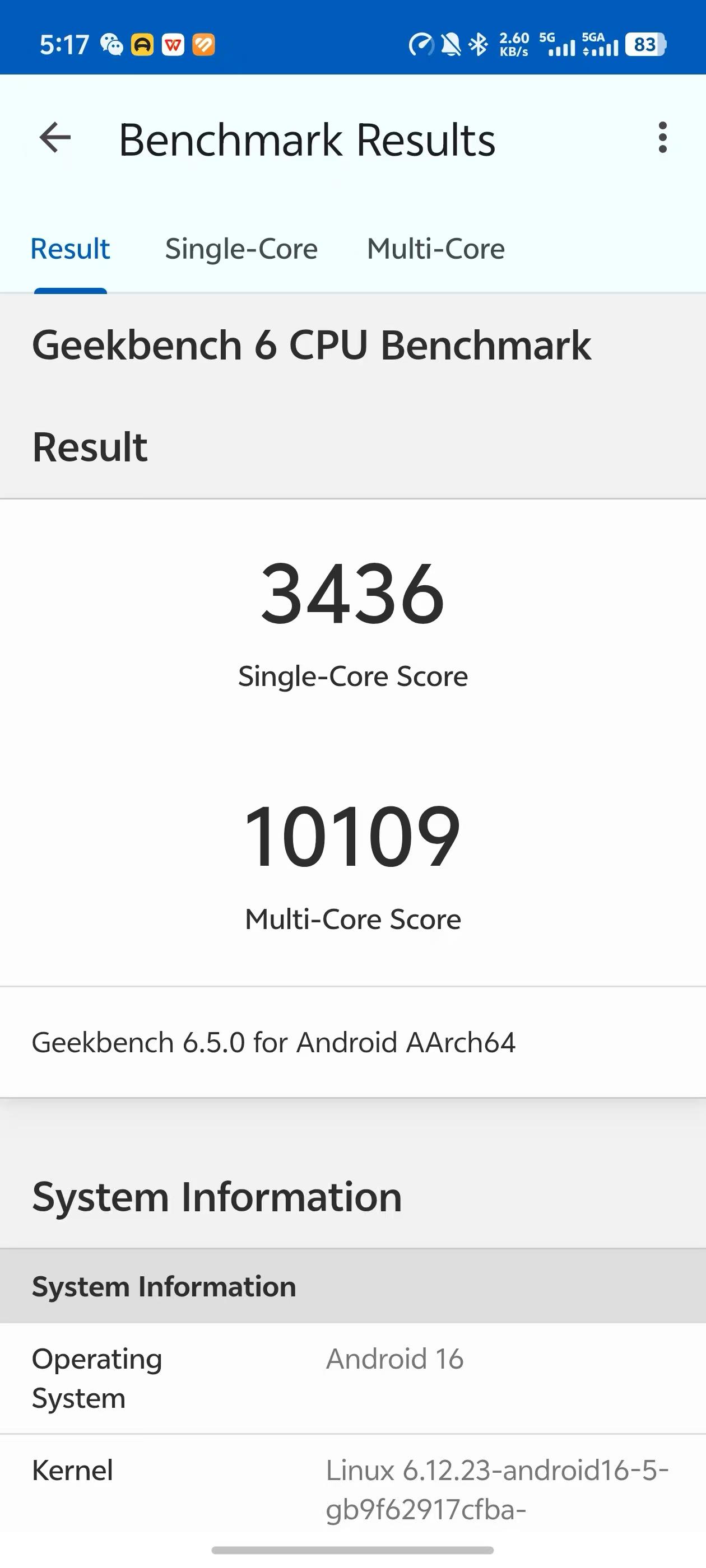
Thanks to the joint tuning by vivo, MediaTek, and ARM, the vivo X300 Pro's performance in GPU is quite "extraordinary." Using the latest 3D Mark Solar Bay ray tracing test as the benchmark, the vivo X300 Pro scored 13573 points, a significant improvement over the previous generation, indicating its enhanced ray tracing performance.
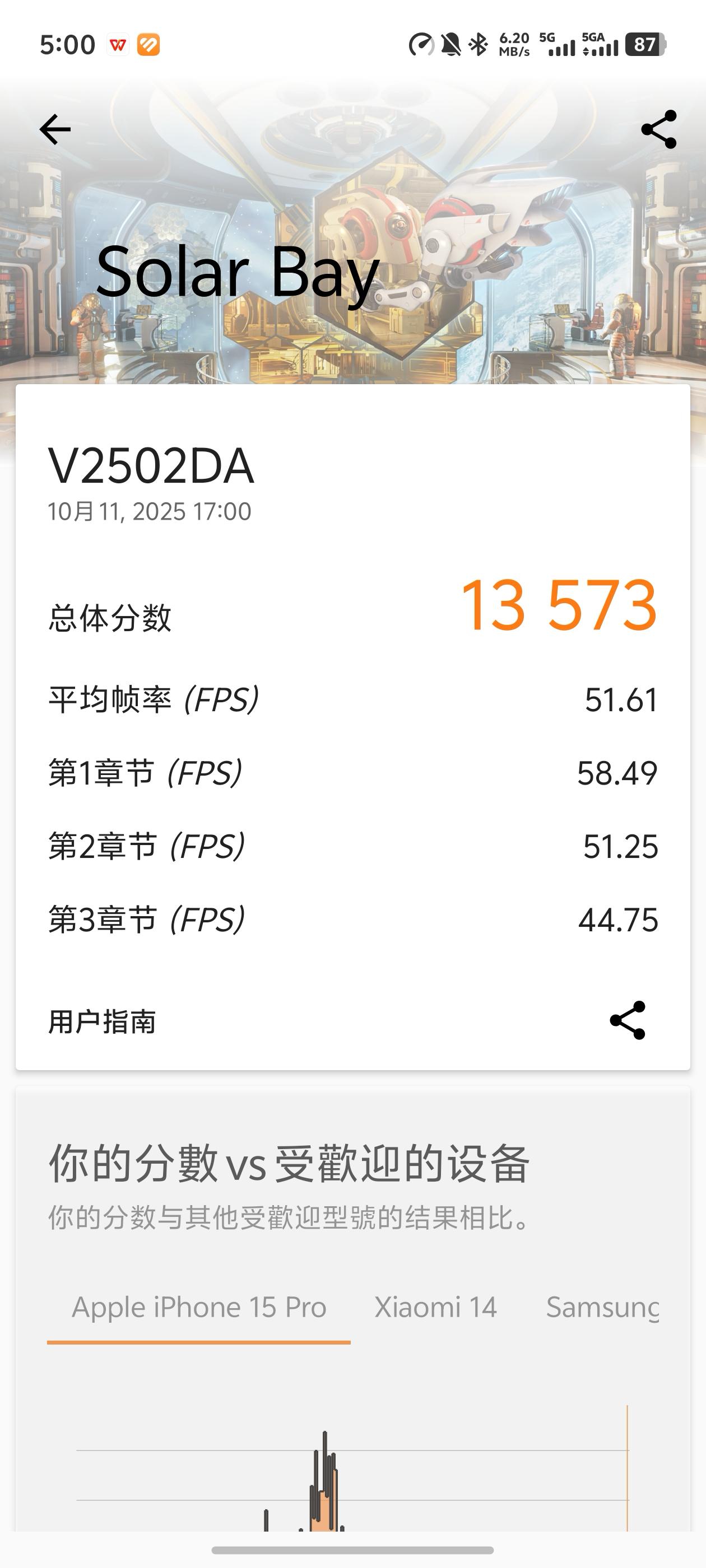
In terms of stability, the vivo X300 Pro achieved a stability rate of 71.1% in the Wlid Life Extreme 20-minute loop test, which is considered top-tier.
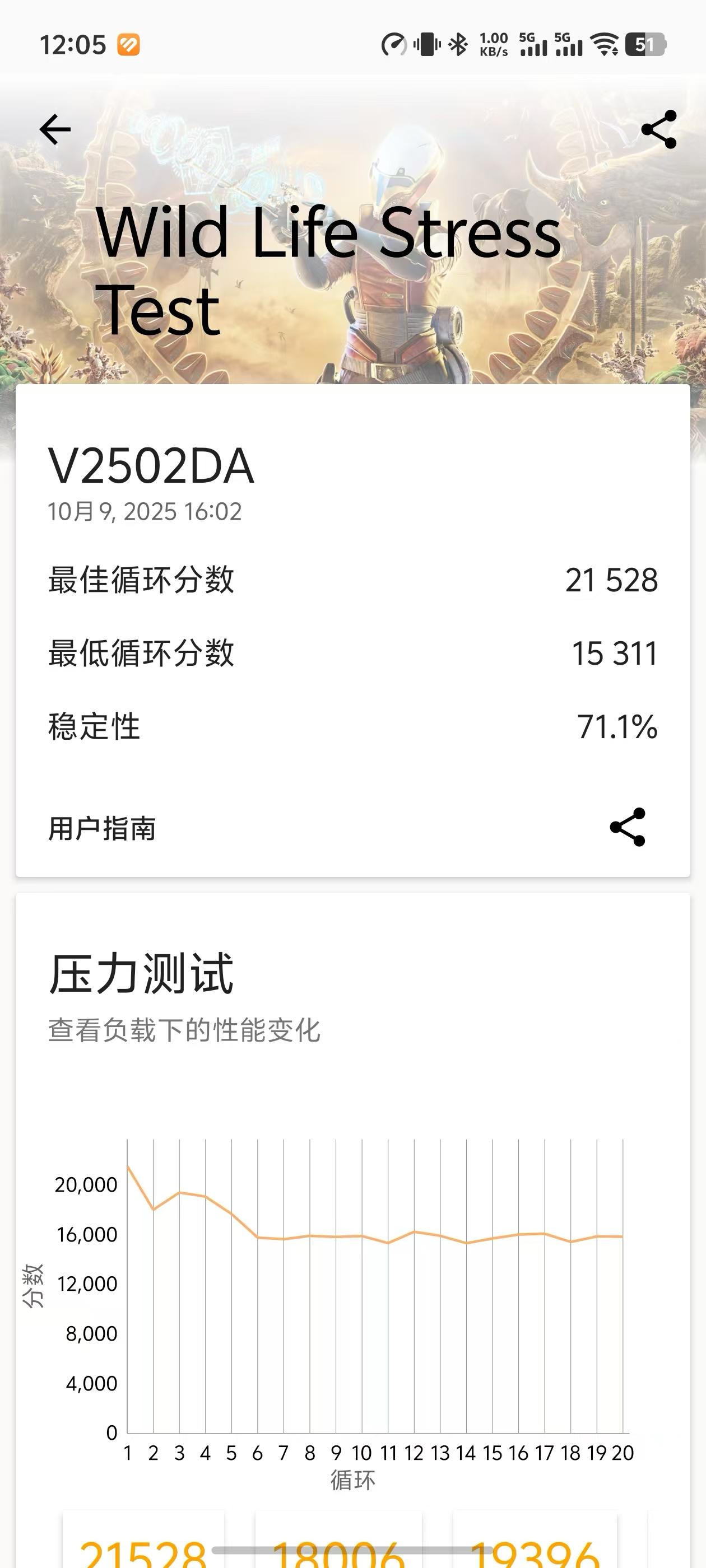
However, these figures only represent the theoretical performance of the vivo X300 Pro. To assess its actual performance, we need to conduct some gaming tests.
Here, Lei Technology has chosen "Wuthering Waves," currently one of the most demanding mobile games. We set it to ultra-high graphics at 60fps, turned off adaptive graphics, and played for half an hour, including exploring and defeating monsters. The average frame rate reached 58.8fps, with the device temperature around 42°C and core power consumption at 5.95W.
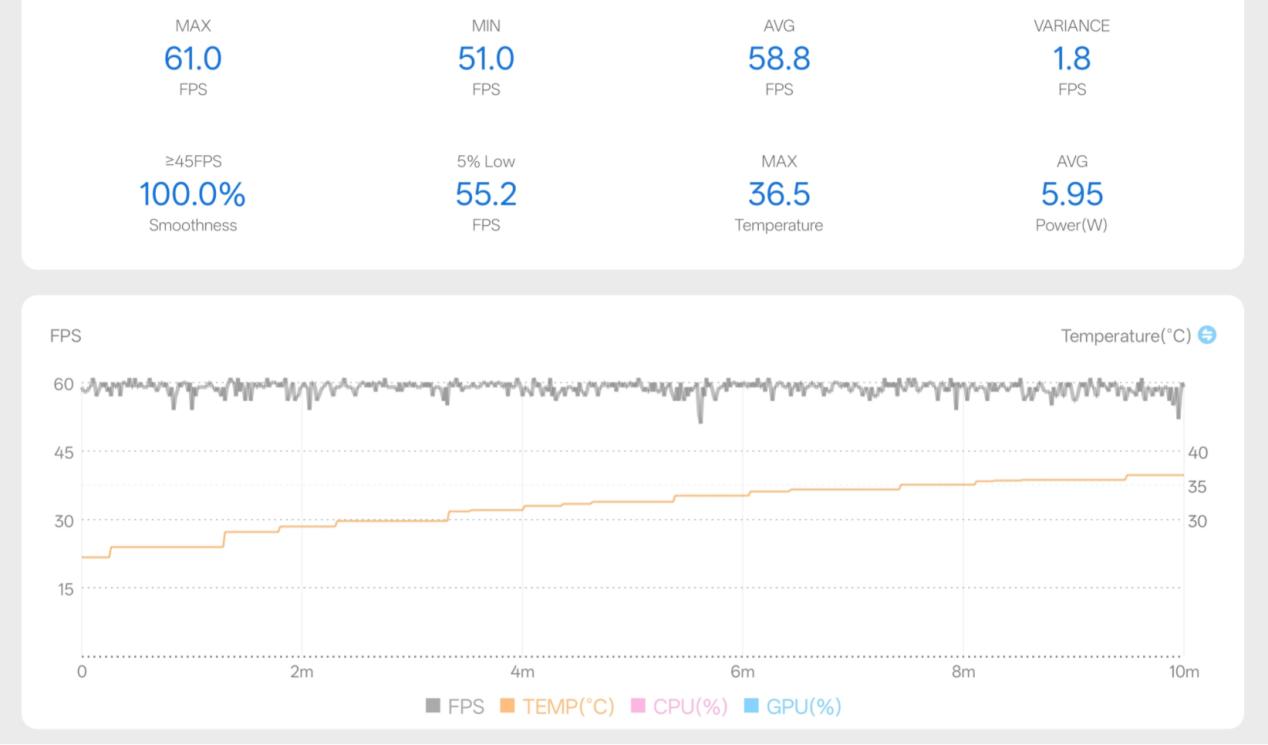
From the results of both benchmark and real-world tests, the gaming performance improvement of the vivo X300 Pro over its predecessor can be described as "leaps and bounds." This is undoubtedly great news for hardcore gamers, signaling the return of an era where mobile game graphics soar to new heights.
By the way, let's mention the battery life of the vivo X300 Pro. Despite its 7.99mm thickness, 226g weight, and flagship-level configuration, vivo has managed to fit a massive 6510mAh battery into the X300 Pro.
In our test, starting at 9:30 AM with 70% brightness and 40% volume, streaming 4K videos online from Bilibili, the battery only dropped by 14% after two hours. Based on this, the vivo X300 Pro's battery life while playing 4K videos can reach around 17 hours.
Additionally, the vivo X300 Pro supports 90W wired fast charging and 40W wireless fast charging, meeting the charging speed needs of most users.
Almost forgot to mention the system. The vivo X300 Pro comes standard with OriginOS 6. The most striking impression Lei Technology has of the new system is its "good looks." This is actually understandable, as nowadays, the operating systems of various smartphone manufacturers are largely similar in terms of functionality and stability, with the competition now focusing on aesthetics and usability.
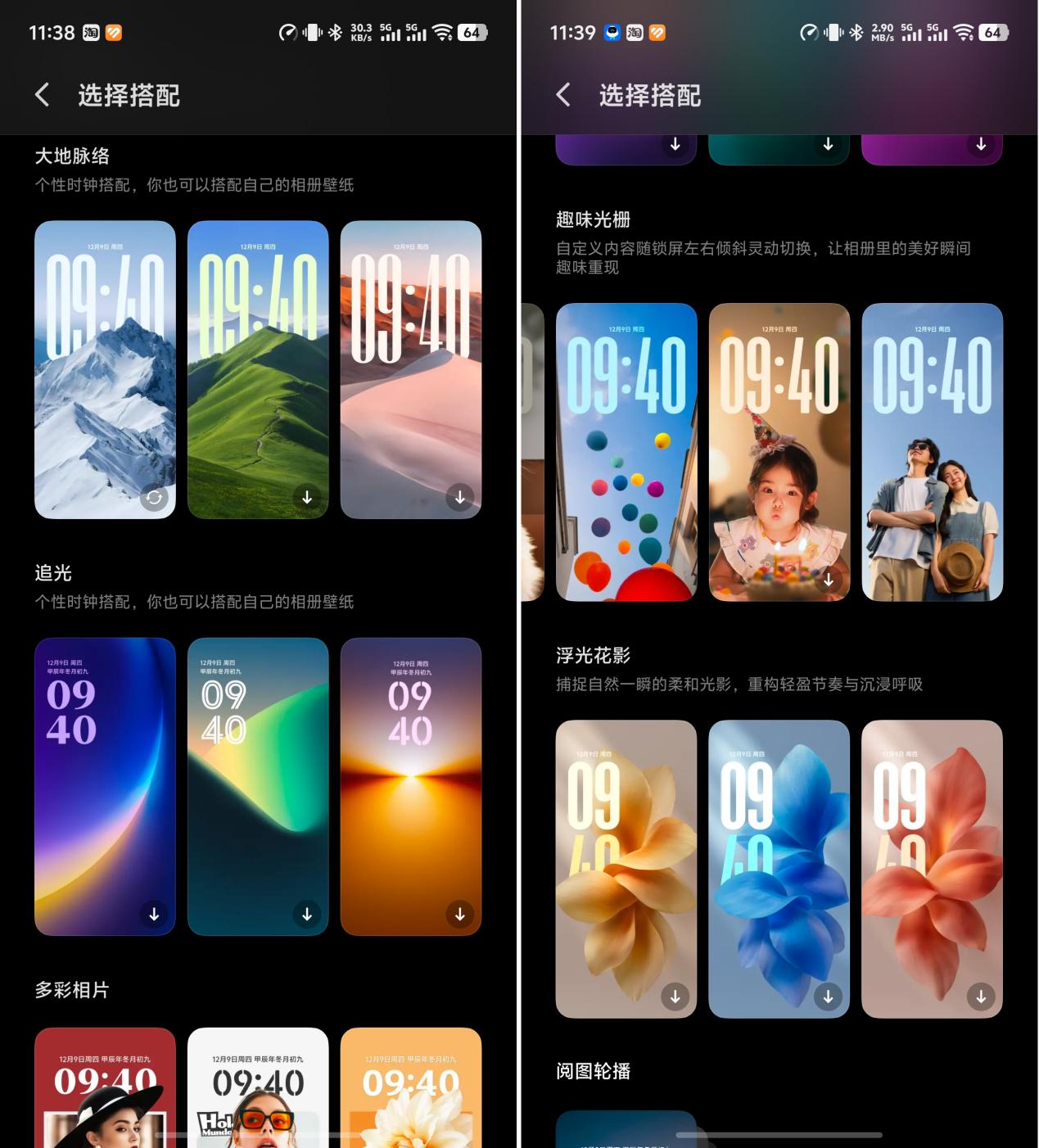
The new OriginOS 6 not only features significant changes in UI design but also adds more delicate animation transitions. However, Lei Technology's favorite part is the lock screen interface. Vivo provides more customizable options, allowing users to change the font, style, and even color of the clock. Combined with the recently popular depth-of-field lock screen, the vivo X300 Pro has seen a huge improvement in system aesthetics compared to the previous generation.
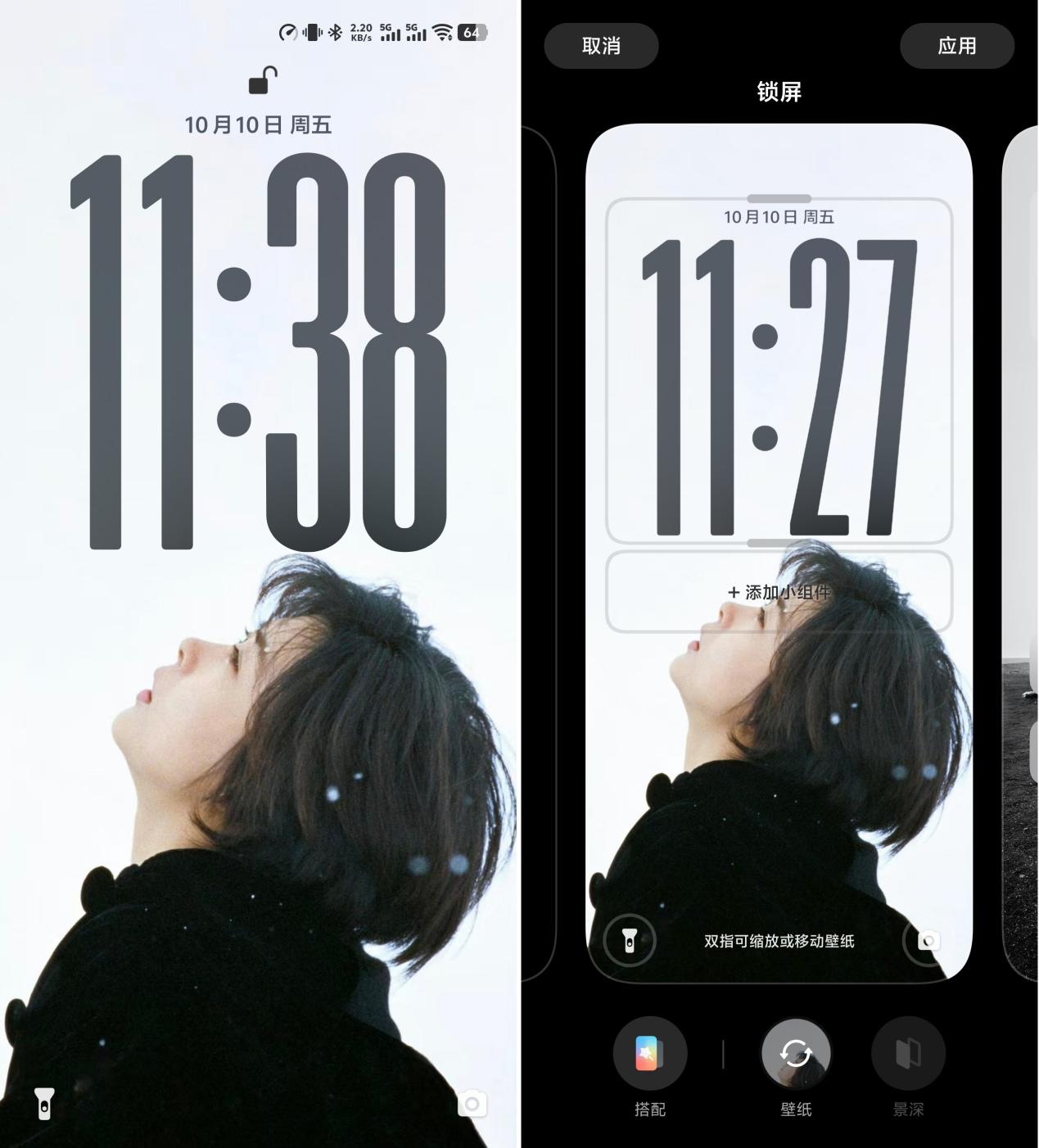
Even more impressive is that OriginOS 6 further bridges the "gap" between vivo and Apple. Now, iPads can directly call upon vivo smartphones to take photos and embed them into notes, and even access iPhone files. For users who own both Apple and vivo devices, this is undoubtedly a "monumental" improvement.
Furthermore, aspects like smoothness, fluidity, and stability, which vivo has always excelled at, won't be elaborated on here. The smooth performance of OriginOS can only be truly appreciated through personal experience.
Overall, the vivo X300 Pro is indeed a solid and user-friendly flagship smartphone.
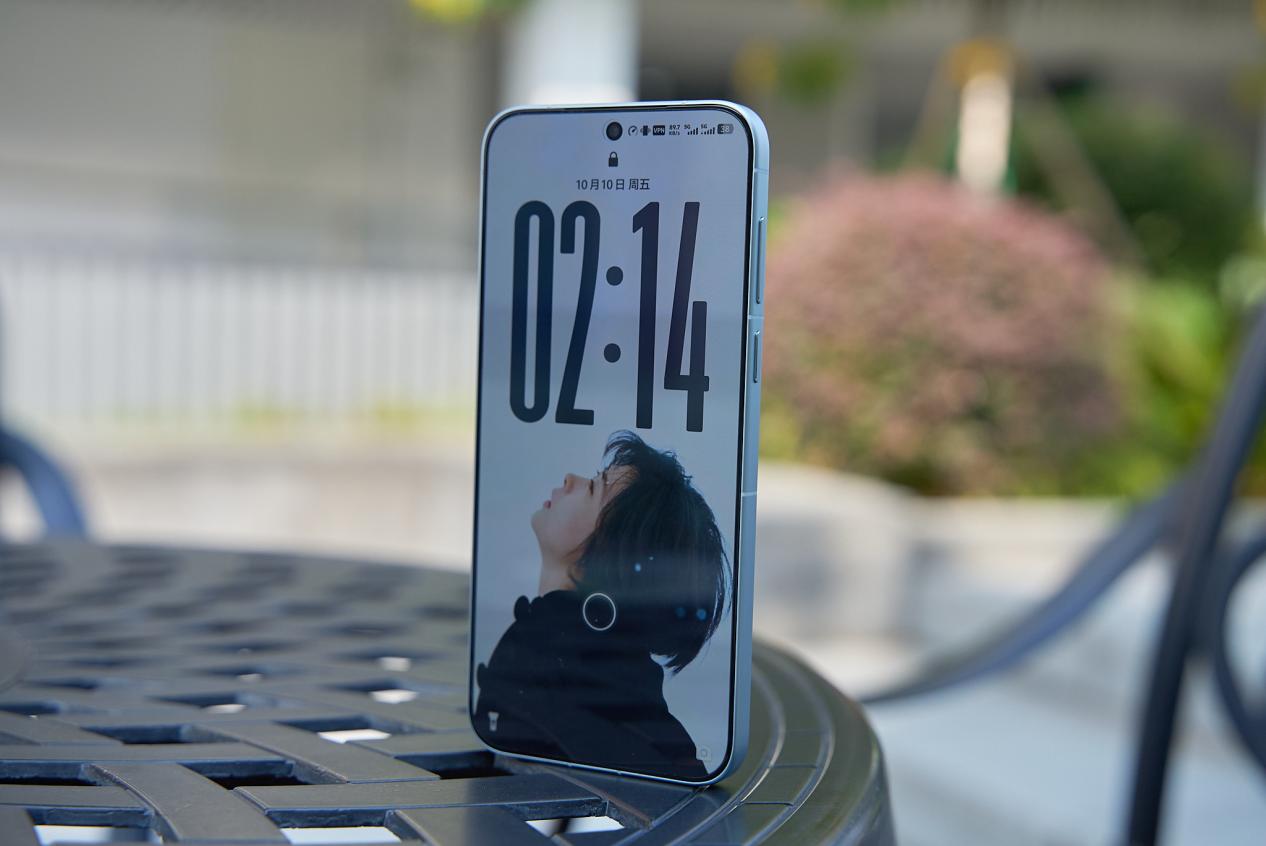
In Lei Technology's view, the vivo X300 Pro possesses almost all the advantages of a best-selling product: a distinctive and recognizable family design, excellent grip, imaging performance comparable to many imaging flagships, stable and powerful performance, and a user-friendly OriginOS 6. These highlights are sufficient to make this product stand out in the increasingly homogeneous smartphone market.
Whether you need superb imaging capabilities, flagship-level performance, professional screens, or simply a smooth basic experience, the vivo X300 Pro can perfectly meet all your needs.
If you're looking to purchase a flagship smartphone that suits you, especially for those who have high imaging requirements but don't prefer the exaggerated appearance of ultra-flagship models, the vivo X300 Pro remains a worthy consideration.







